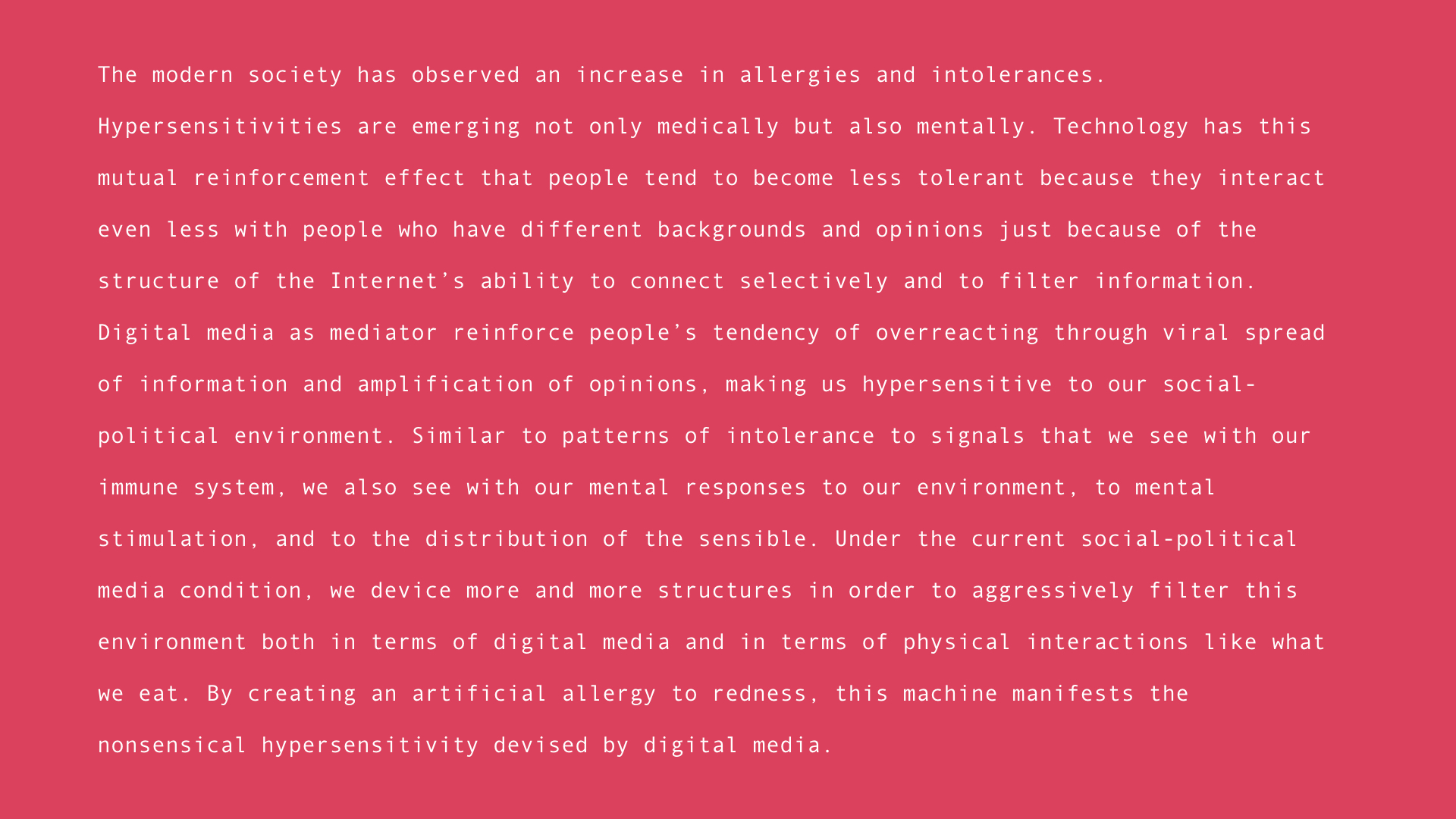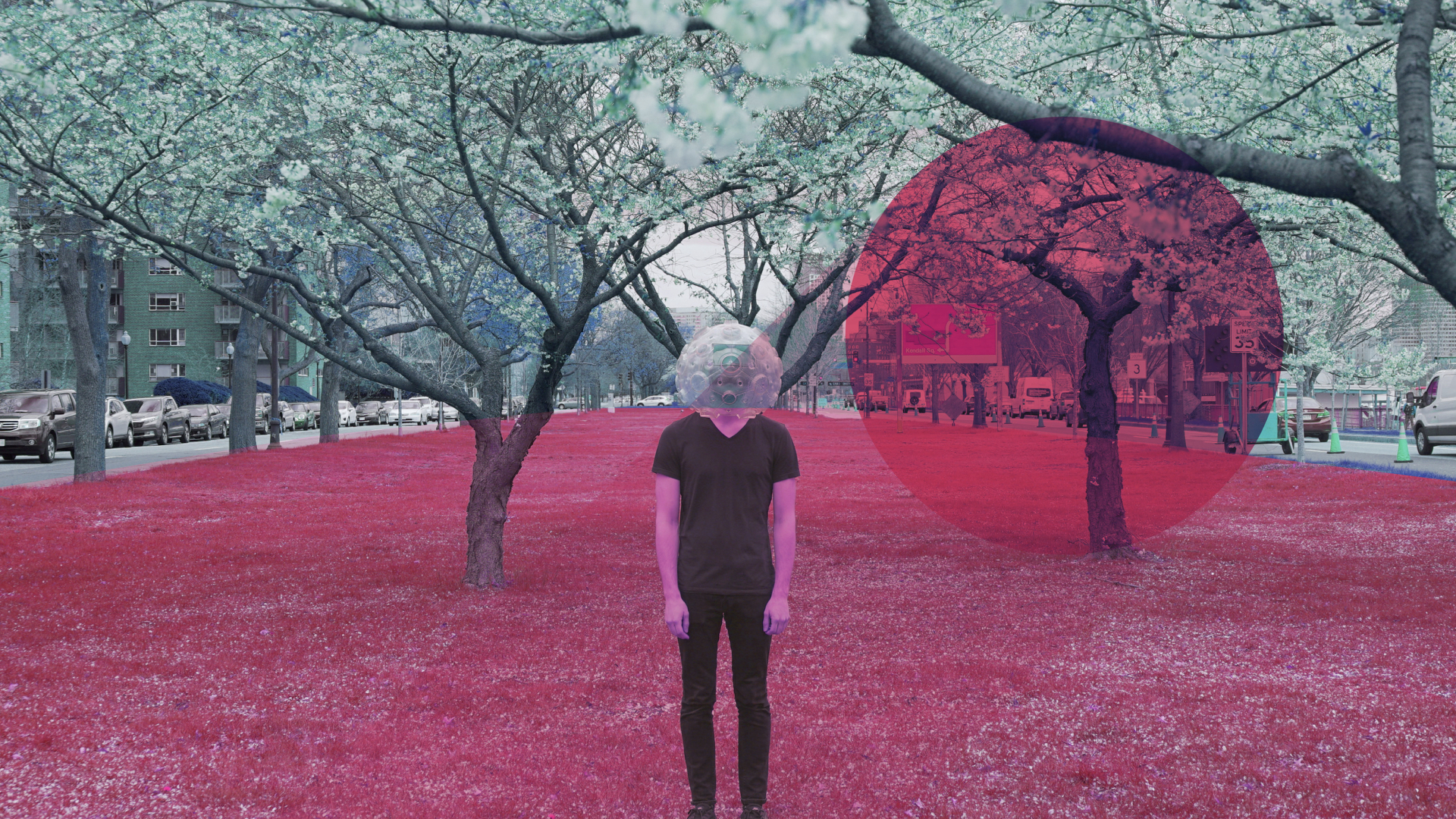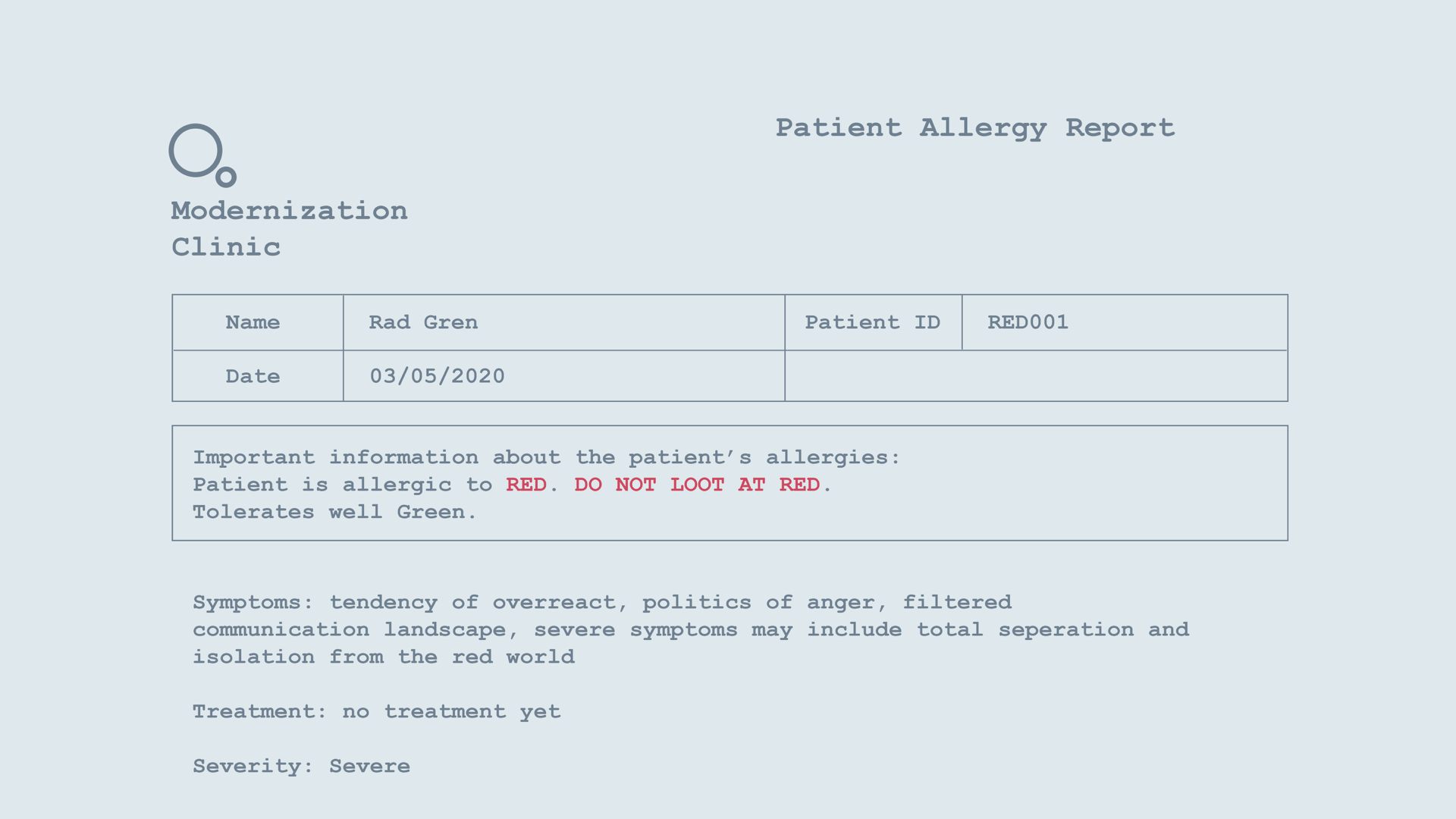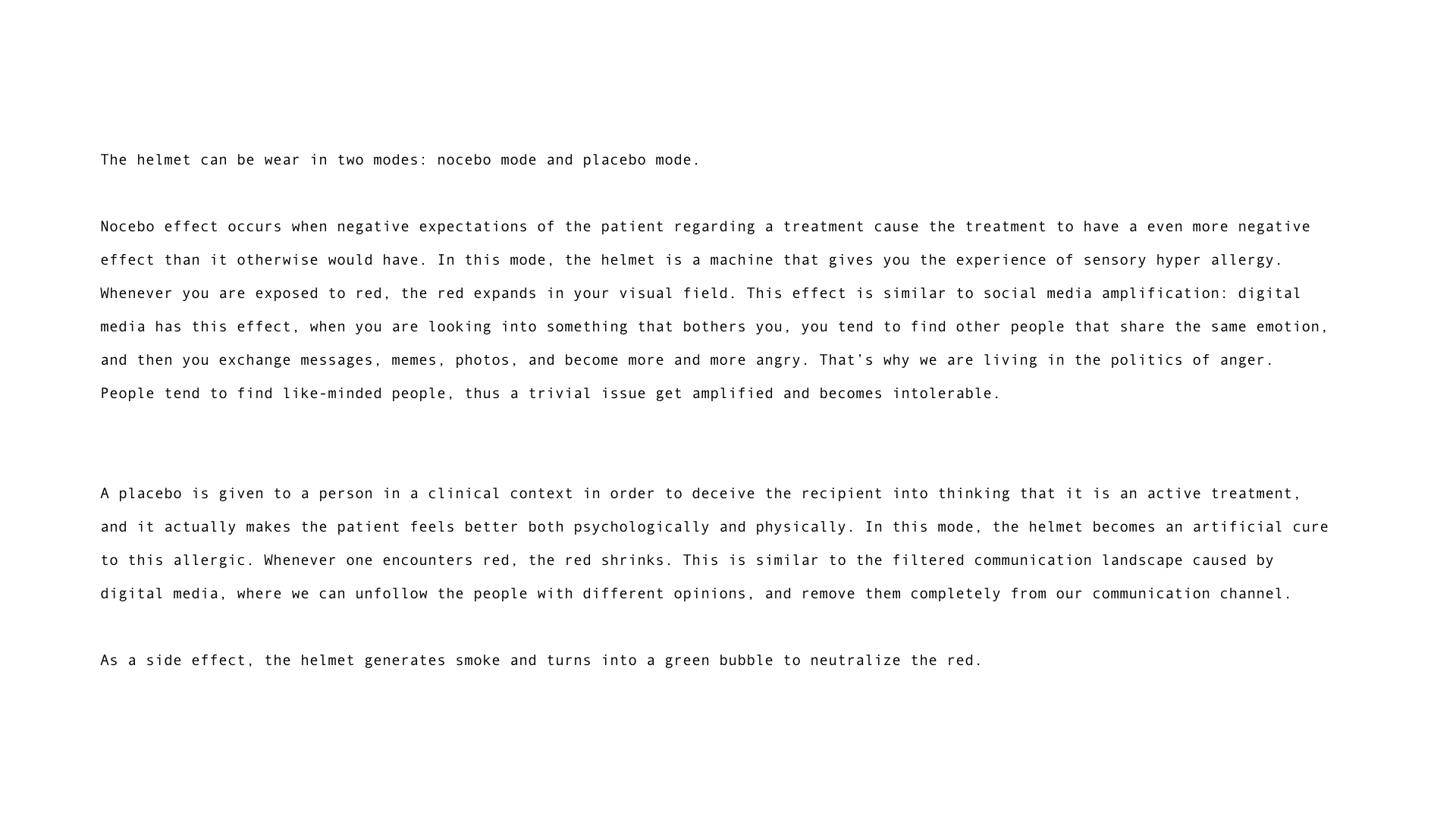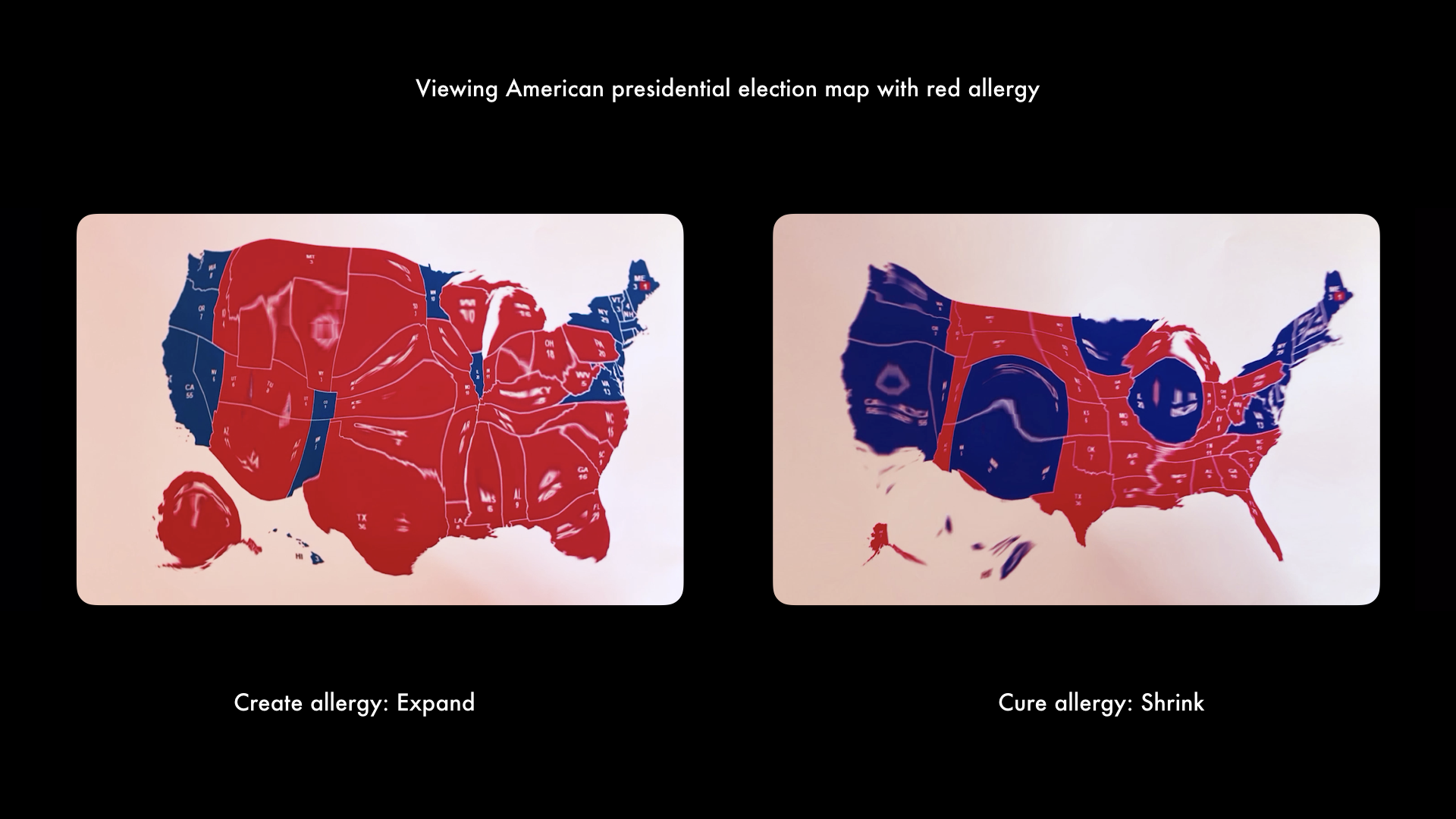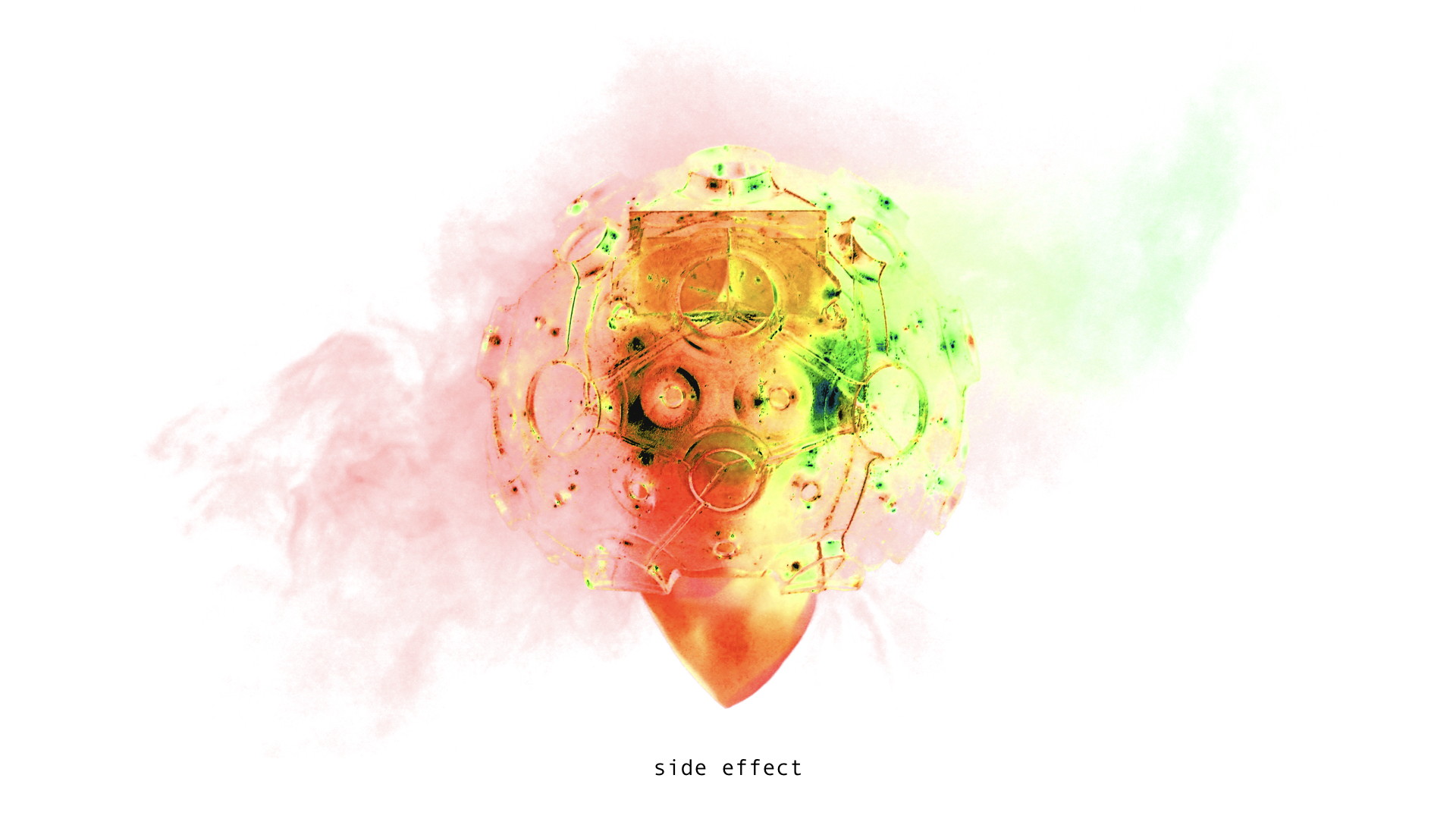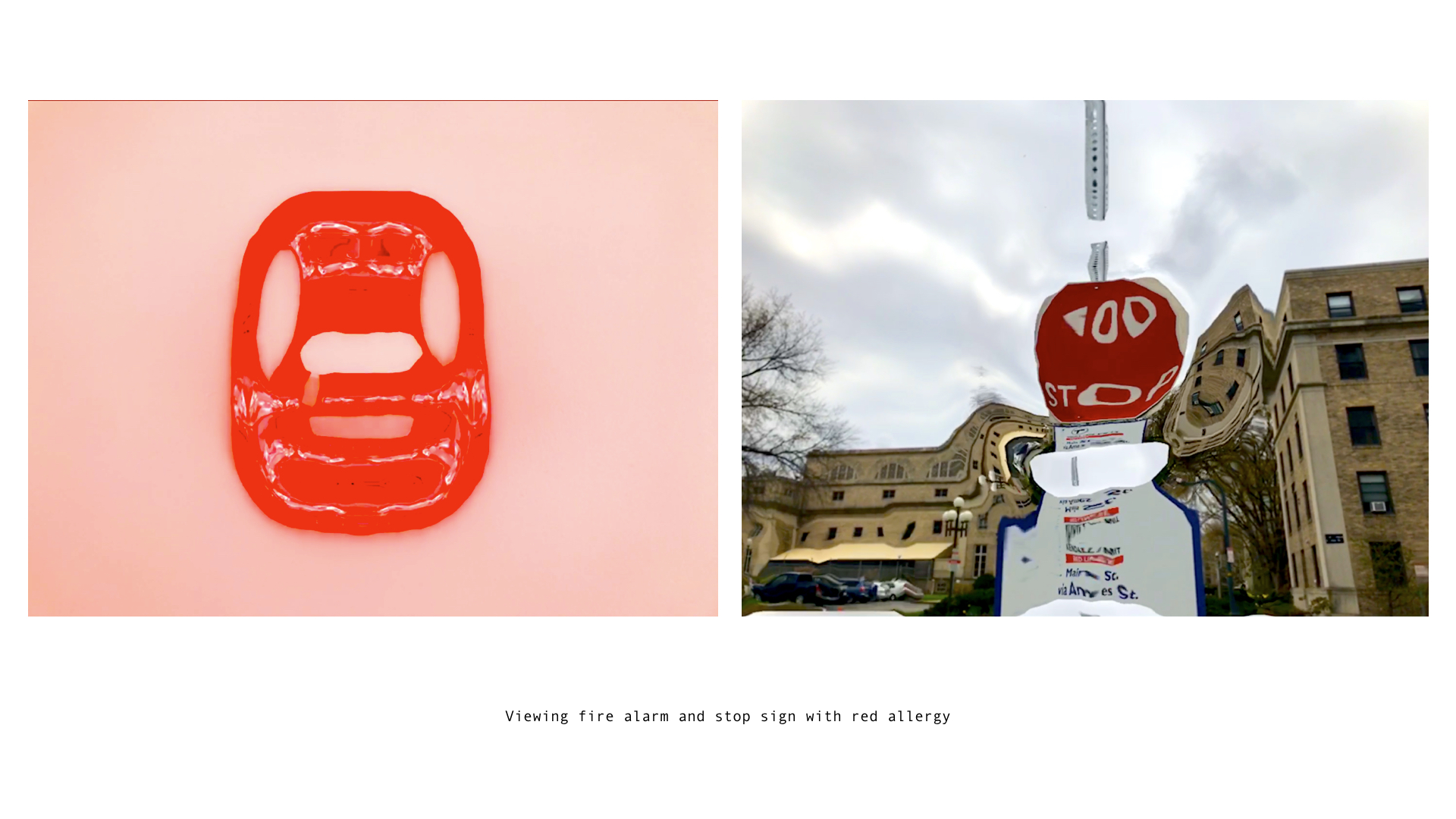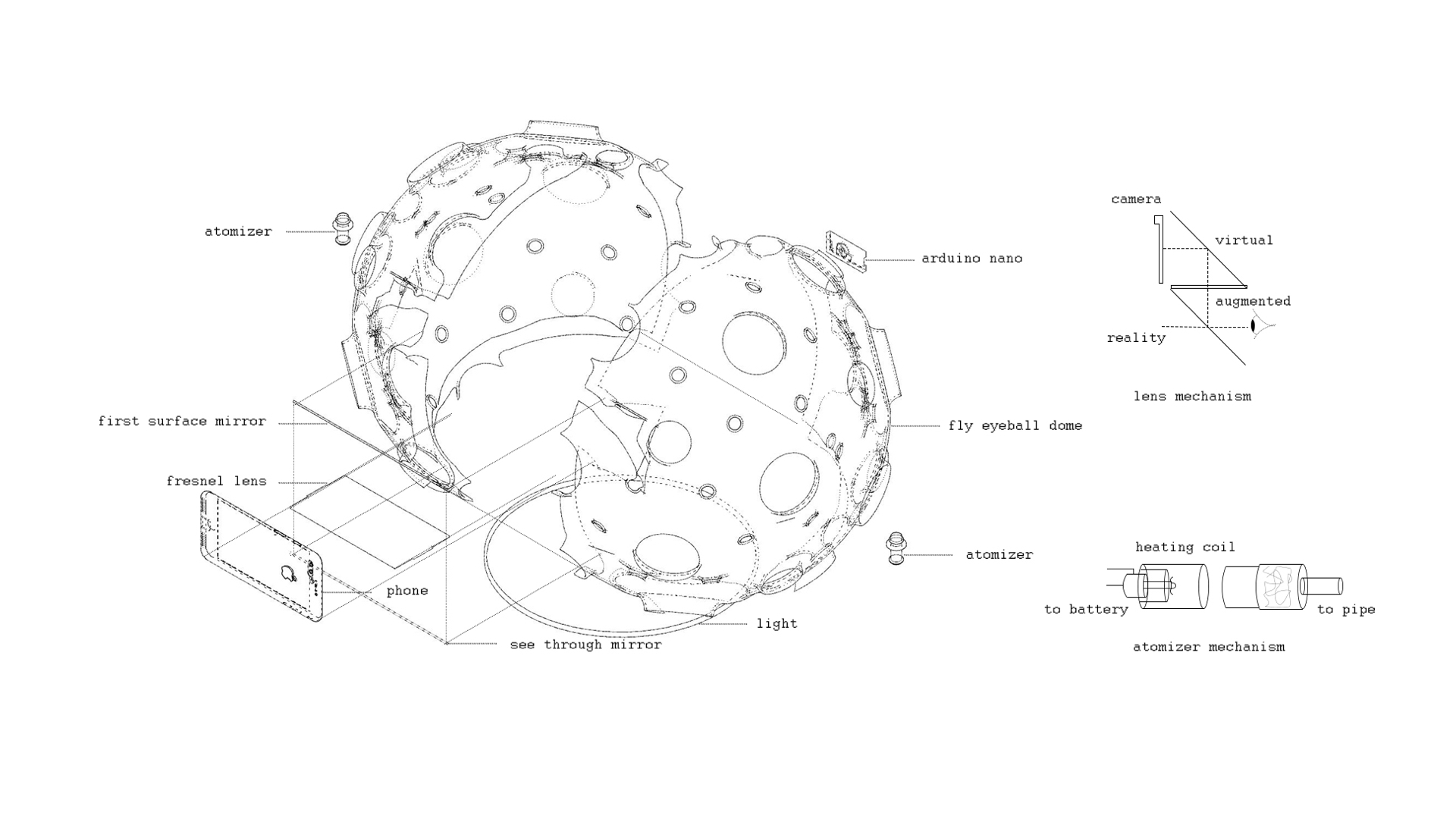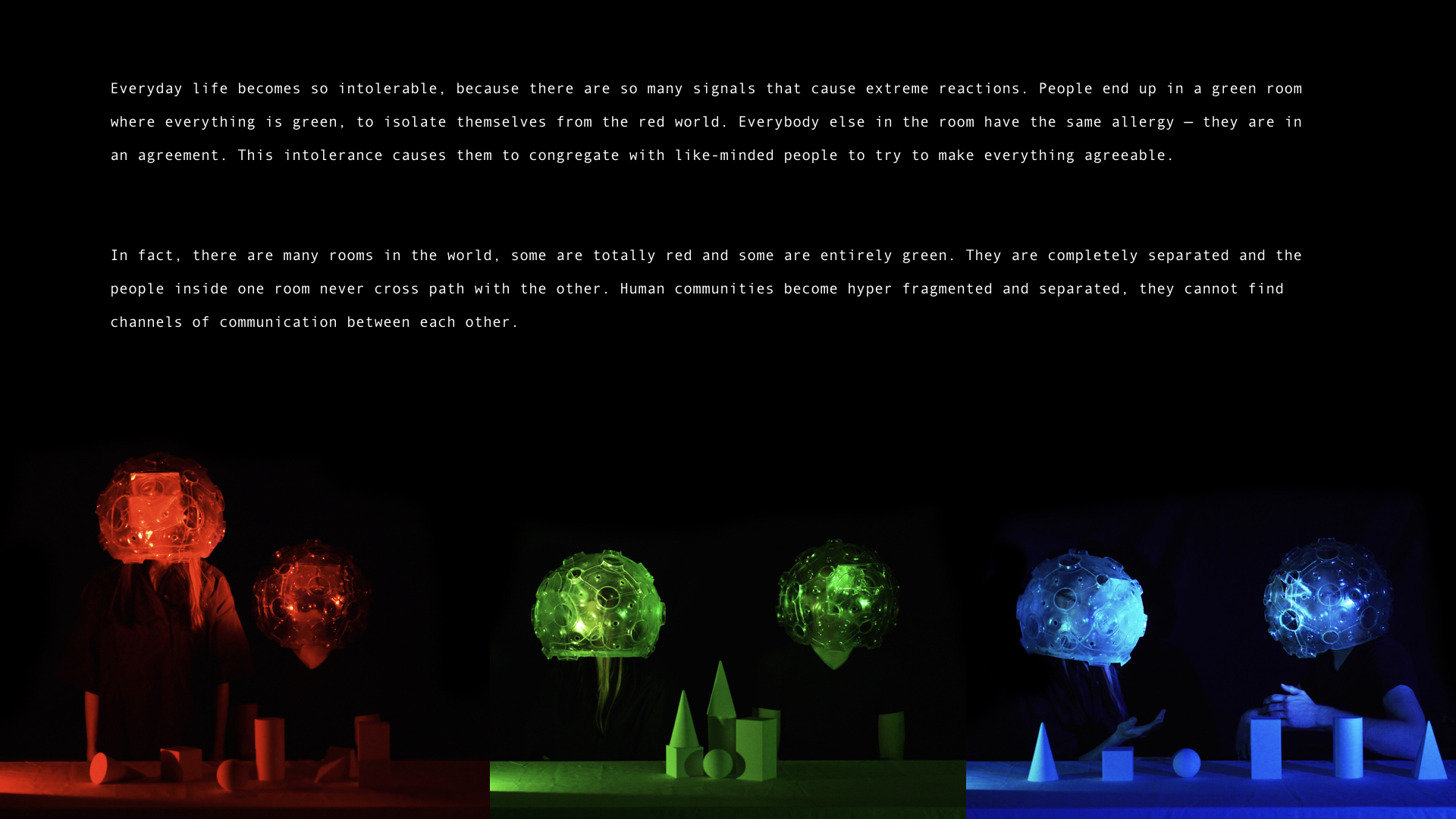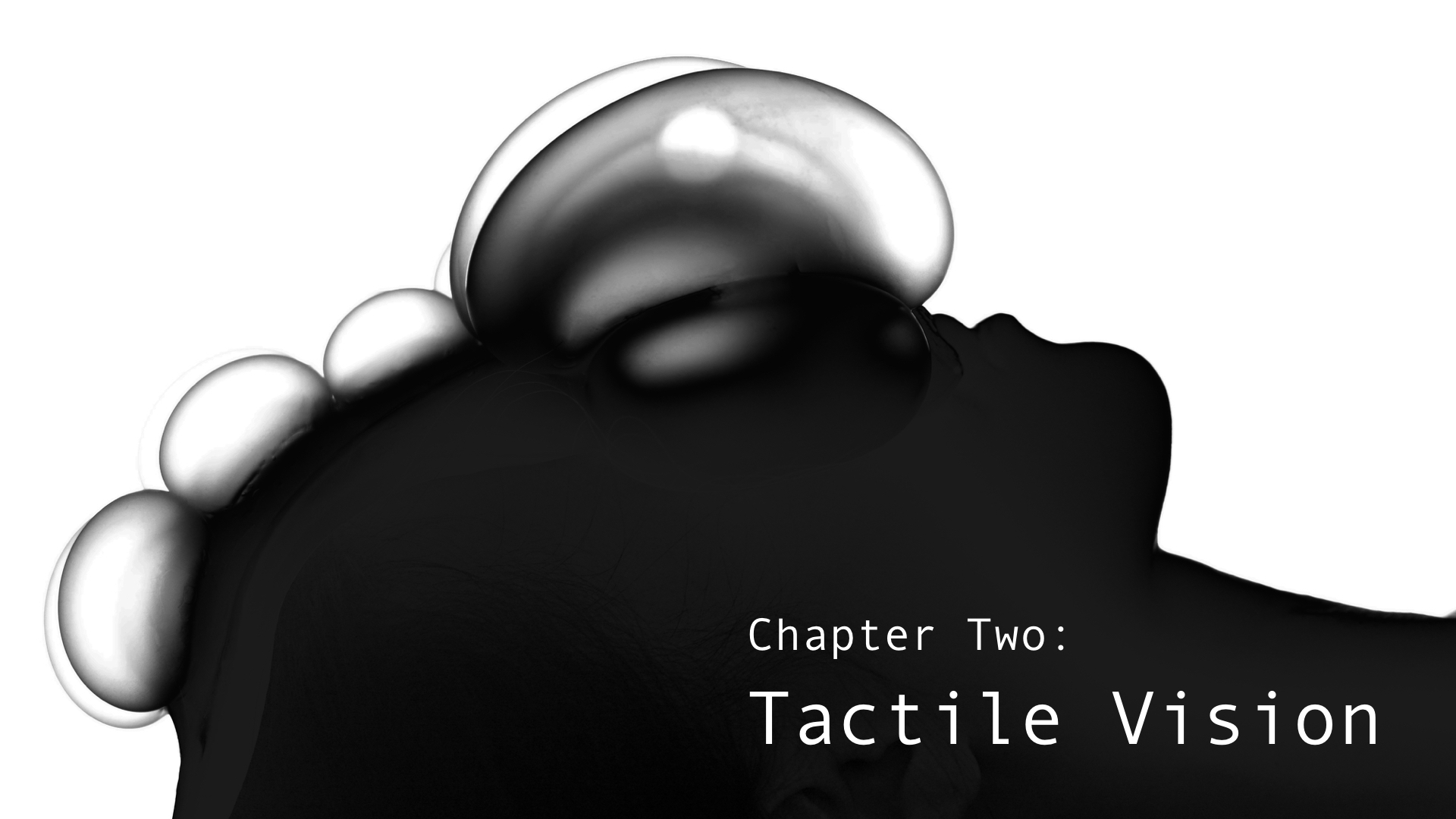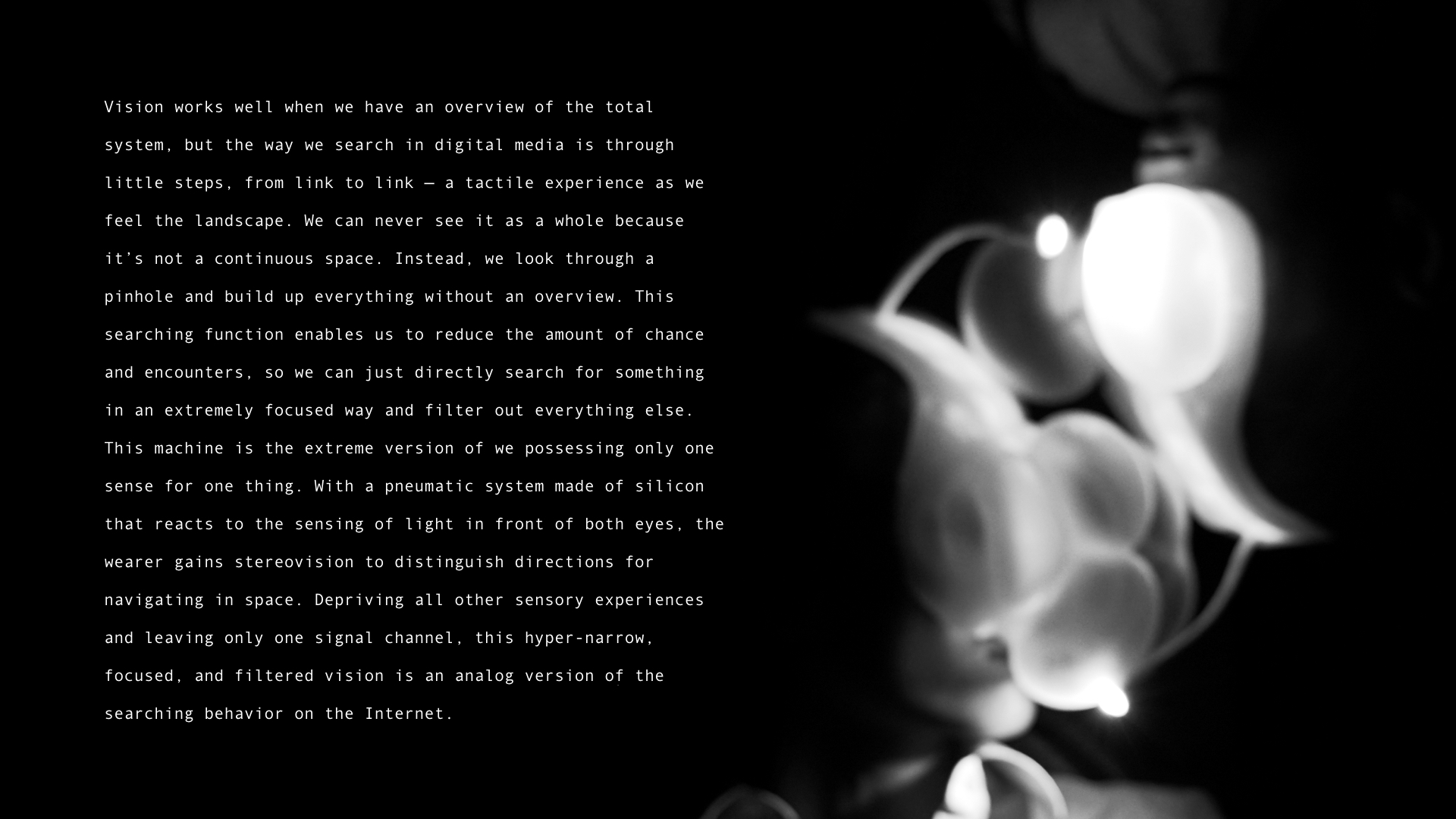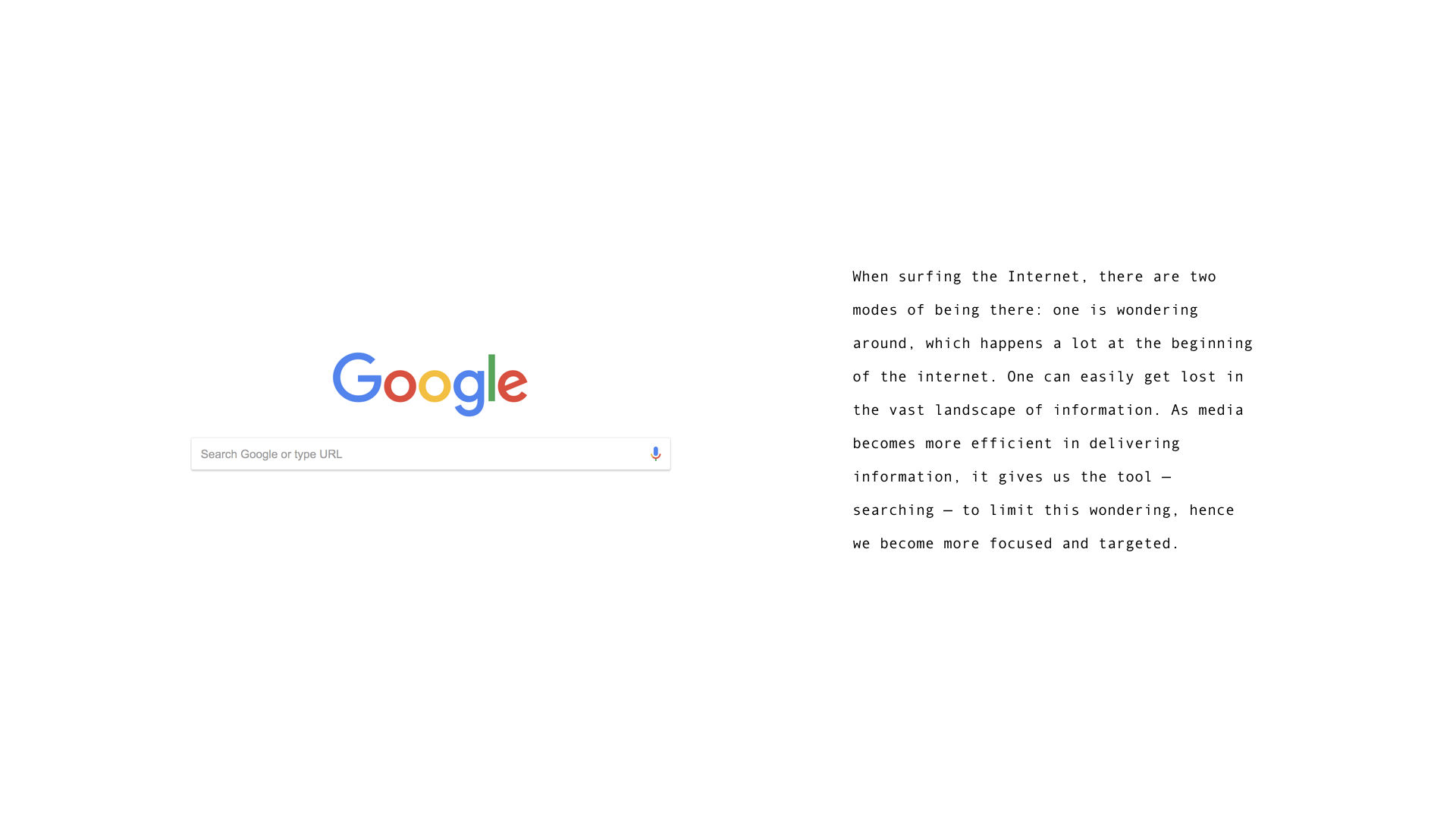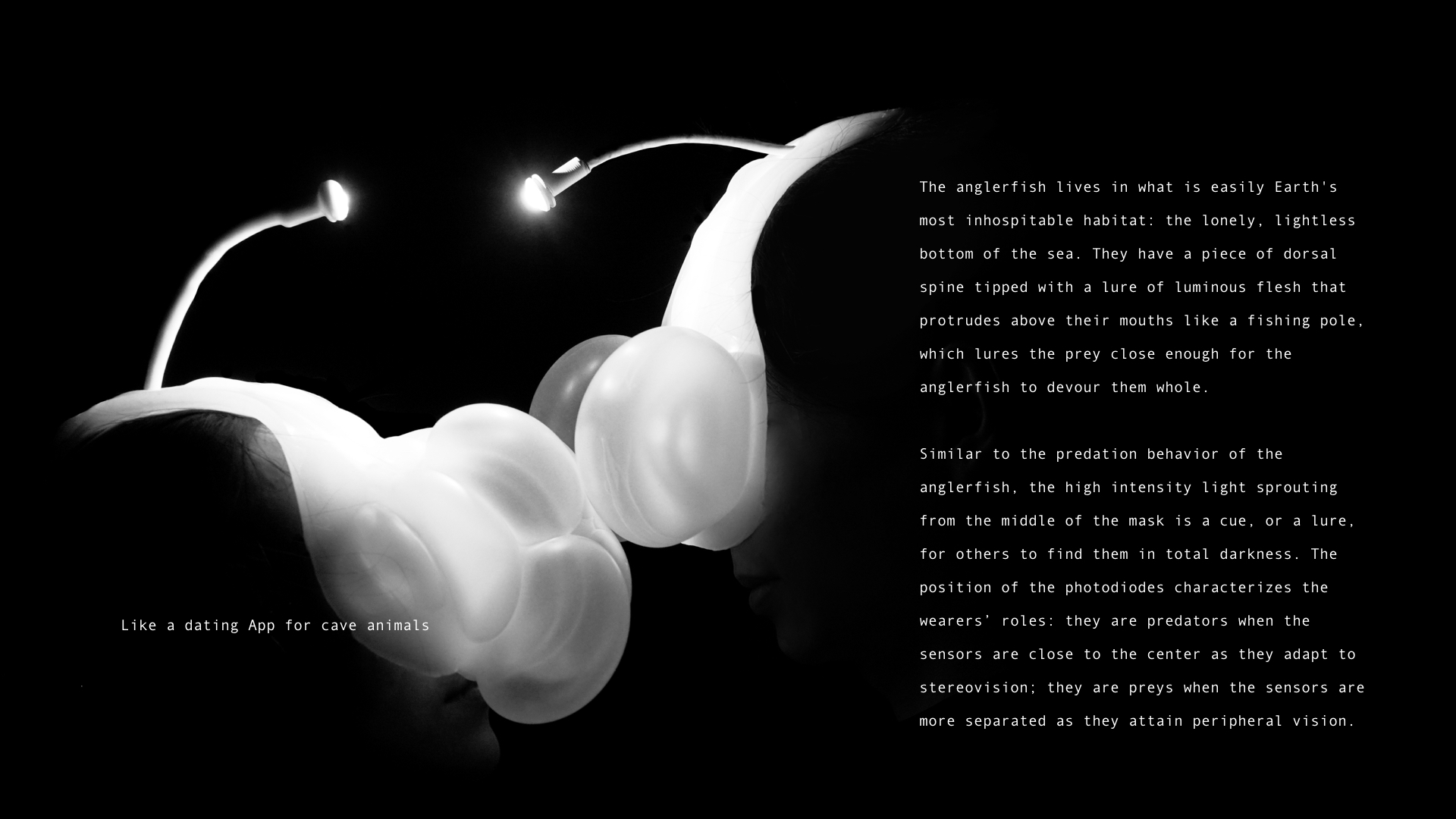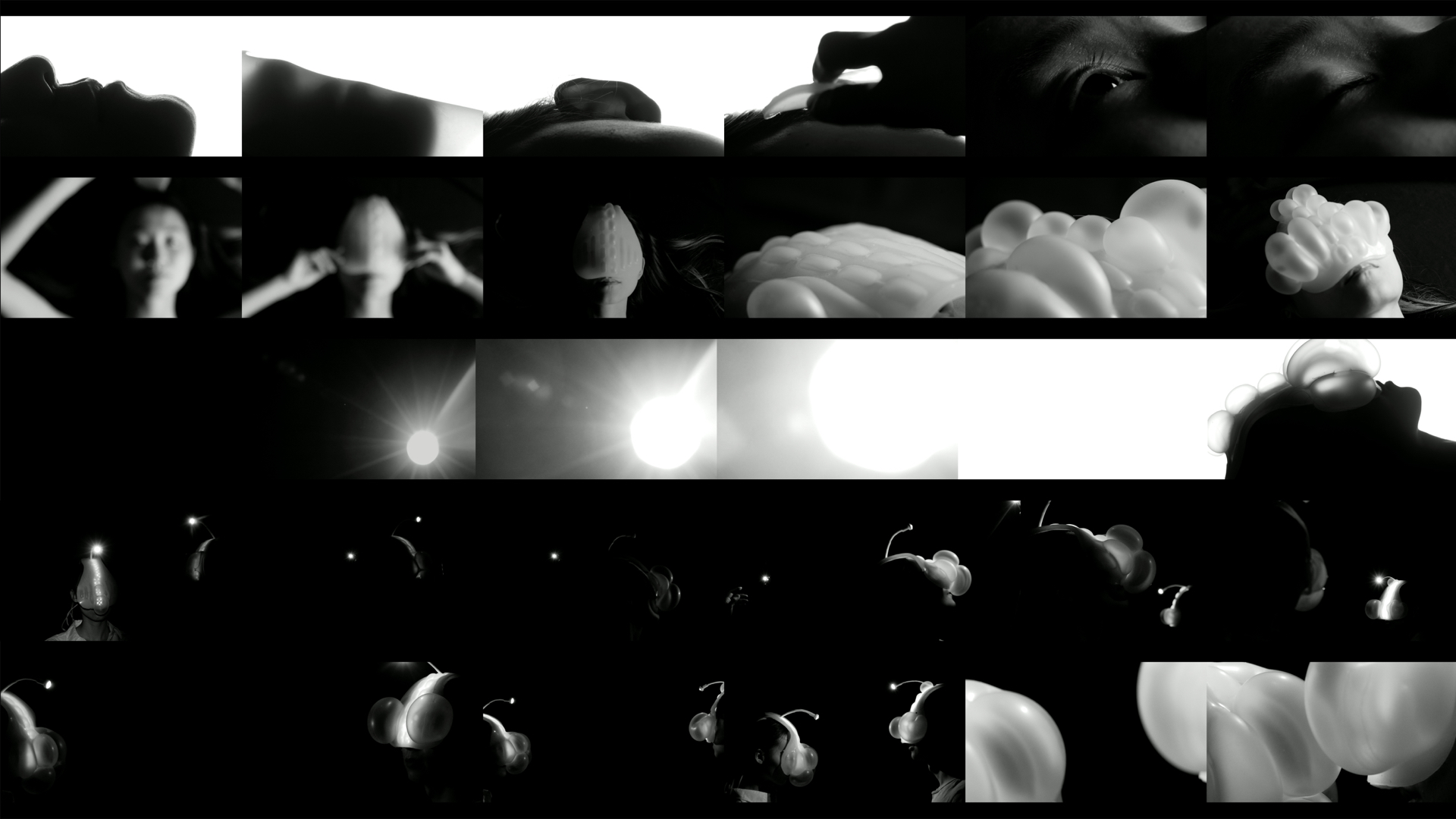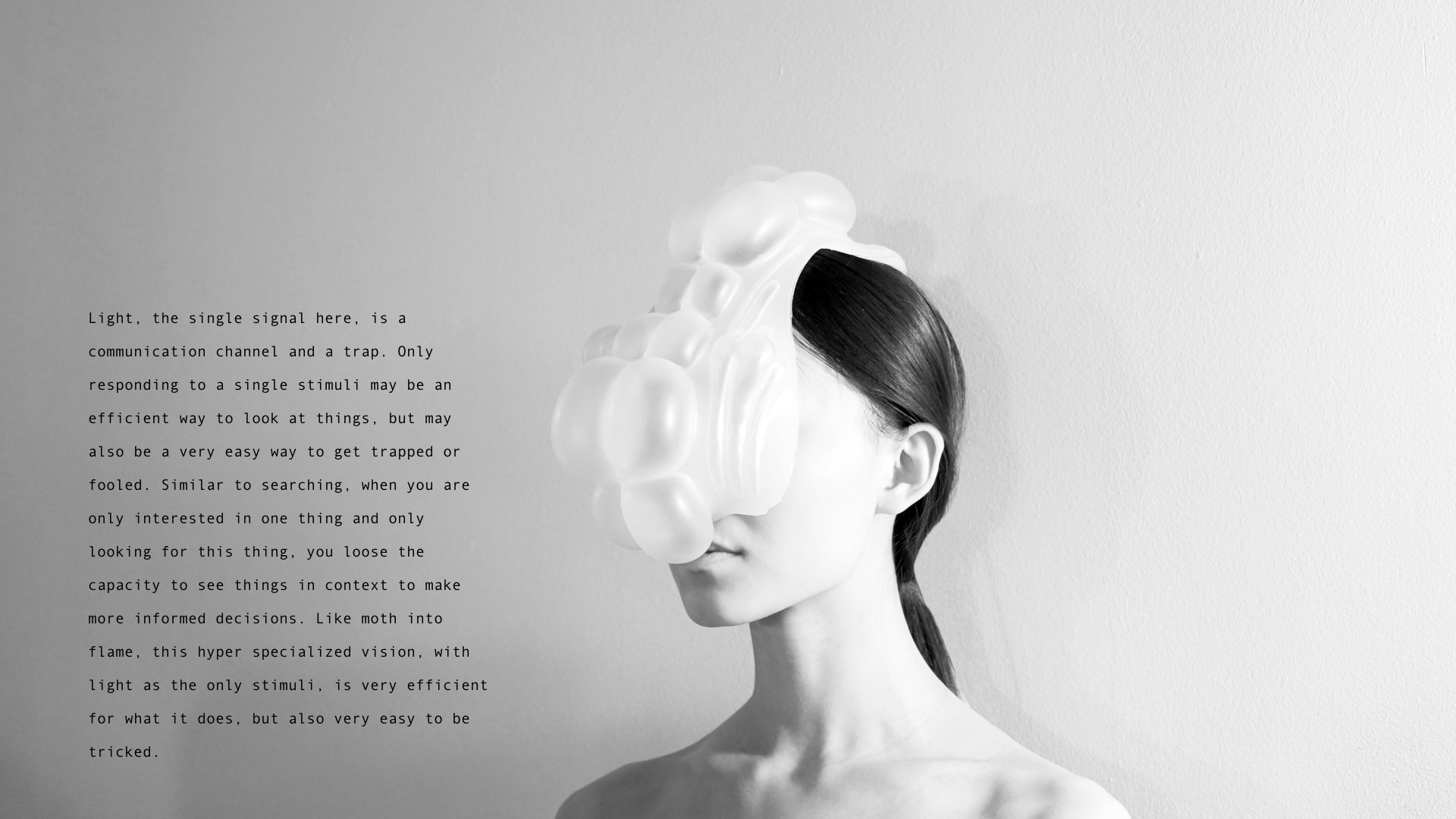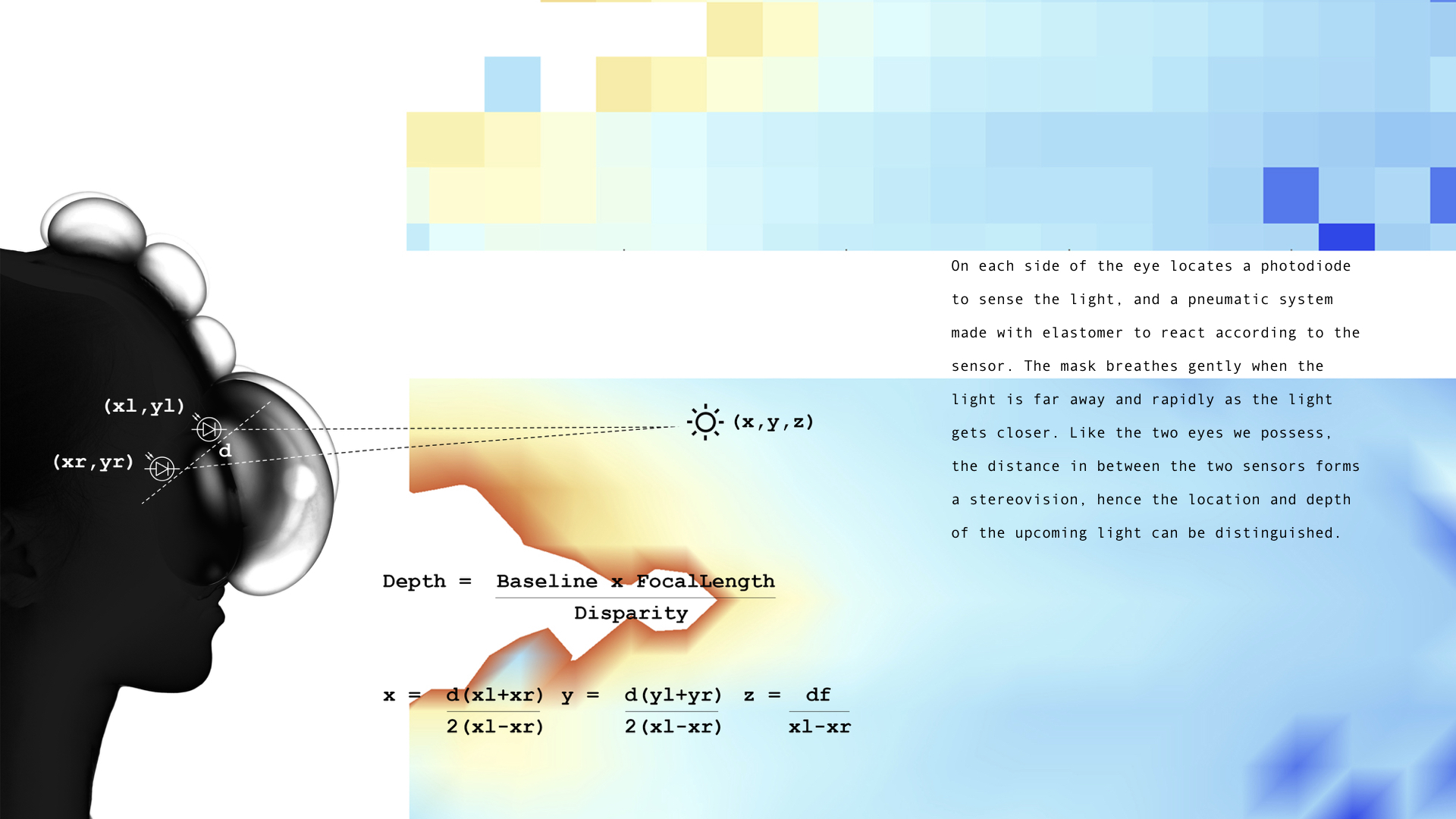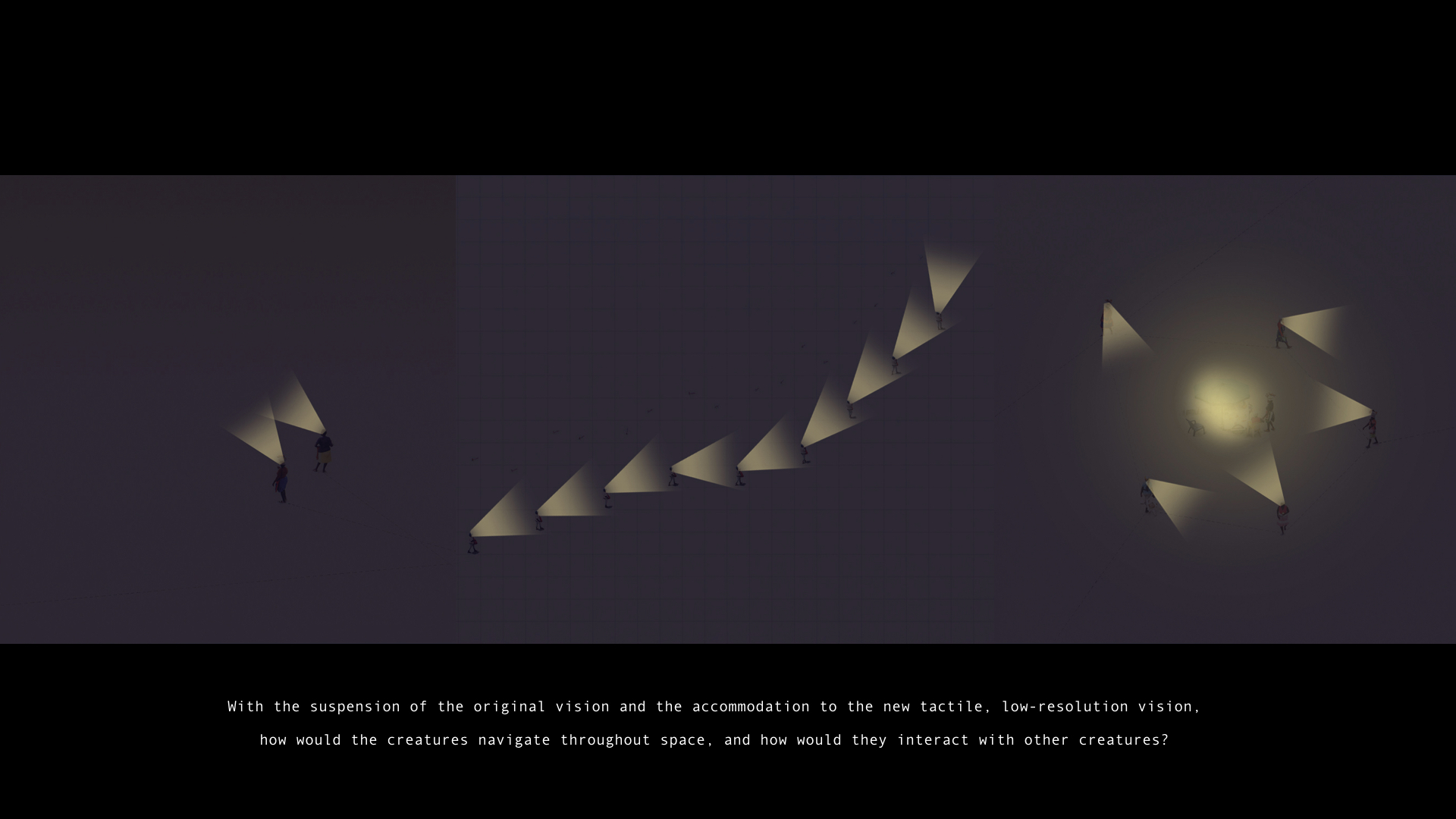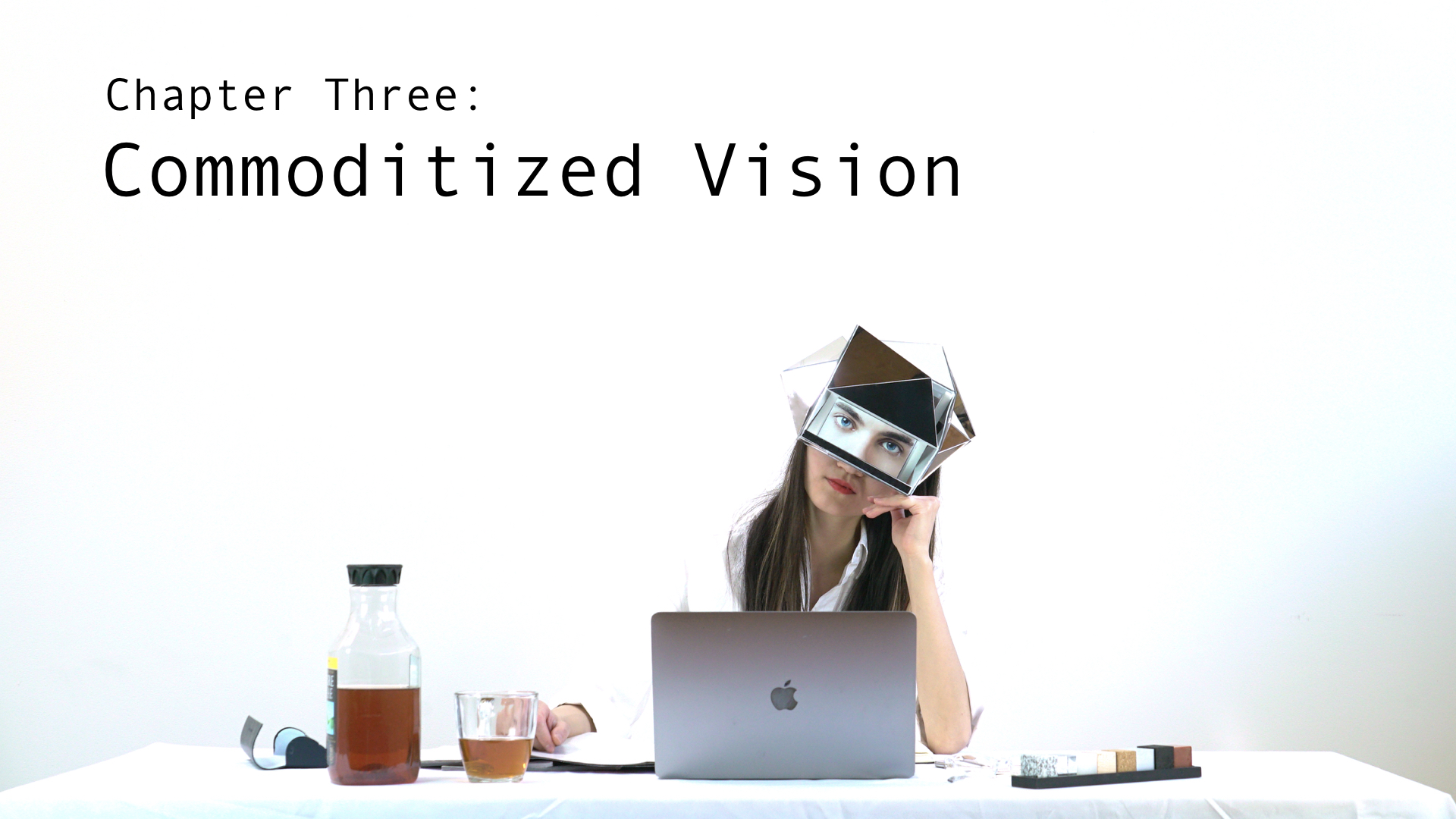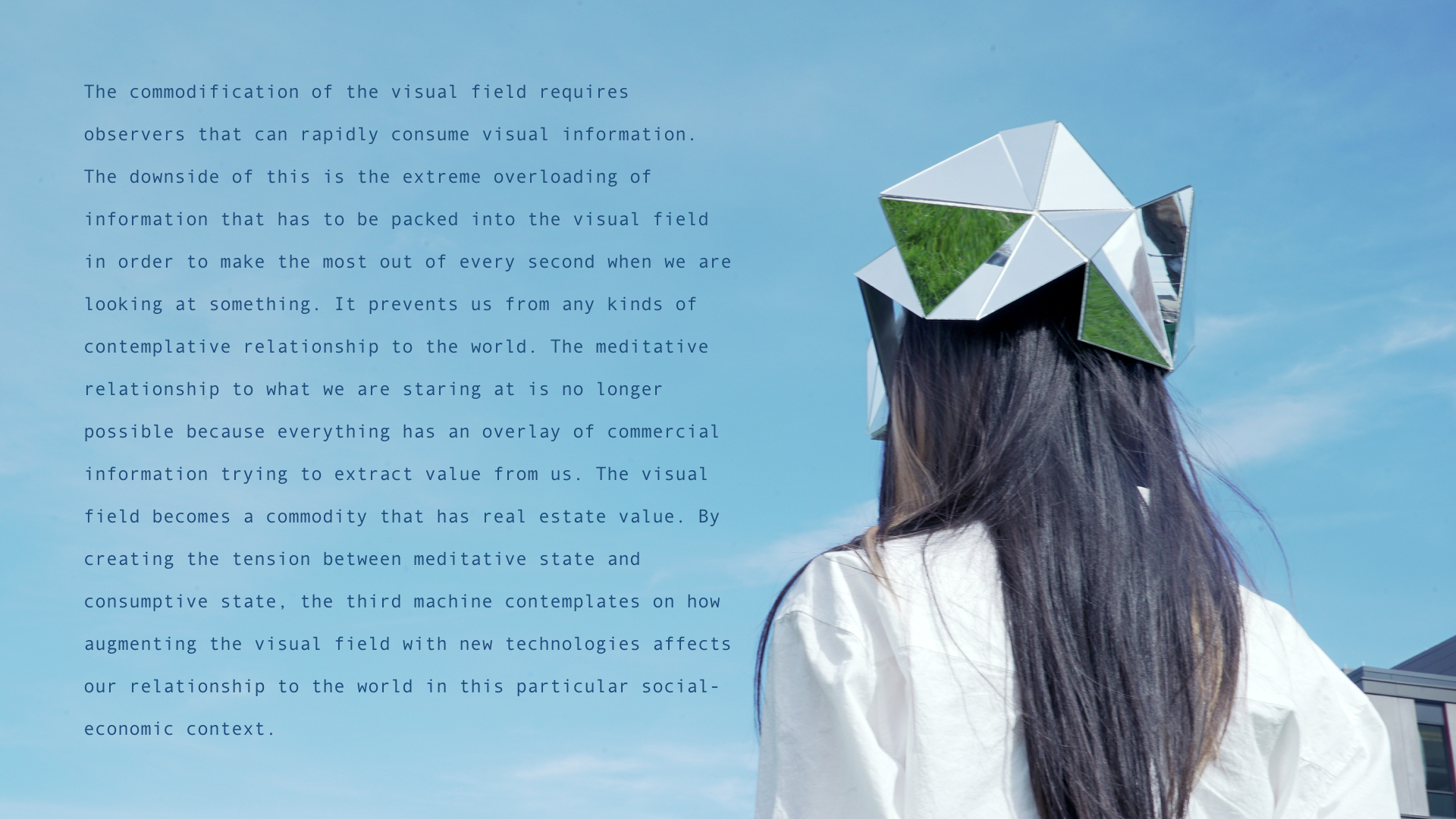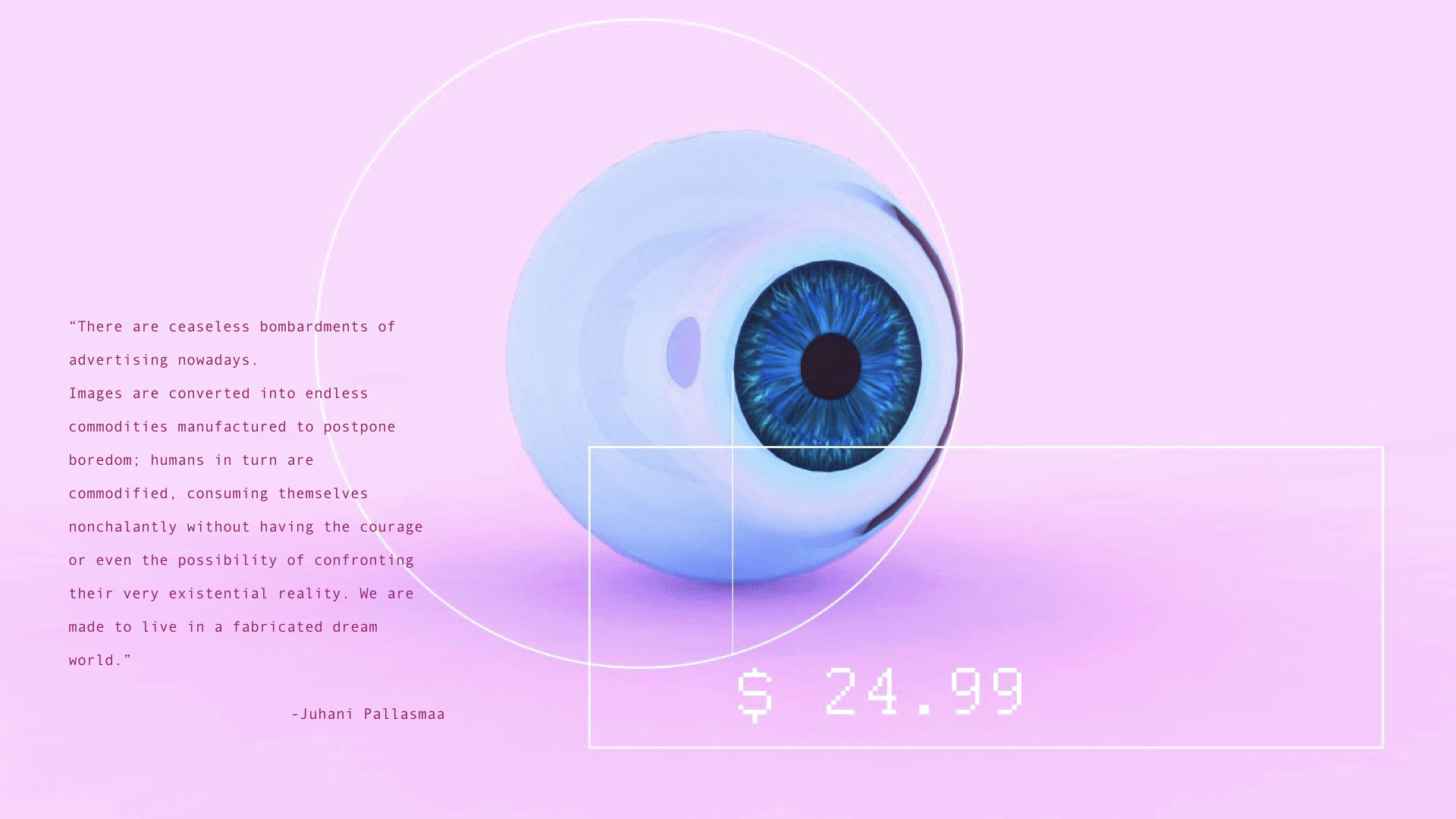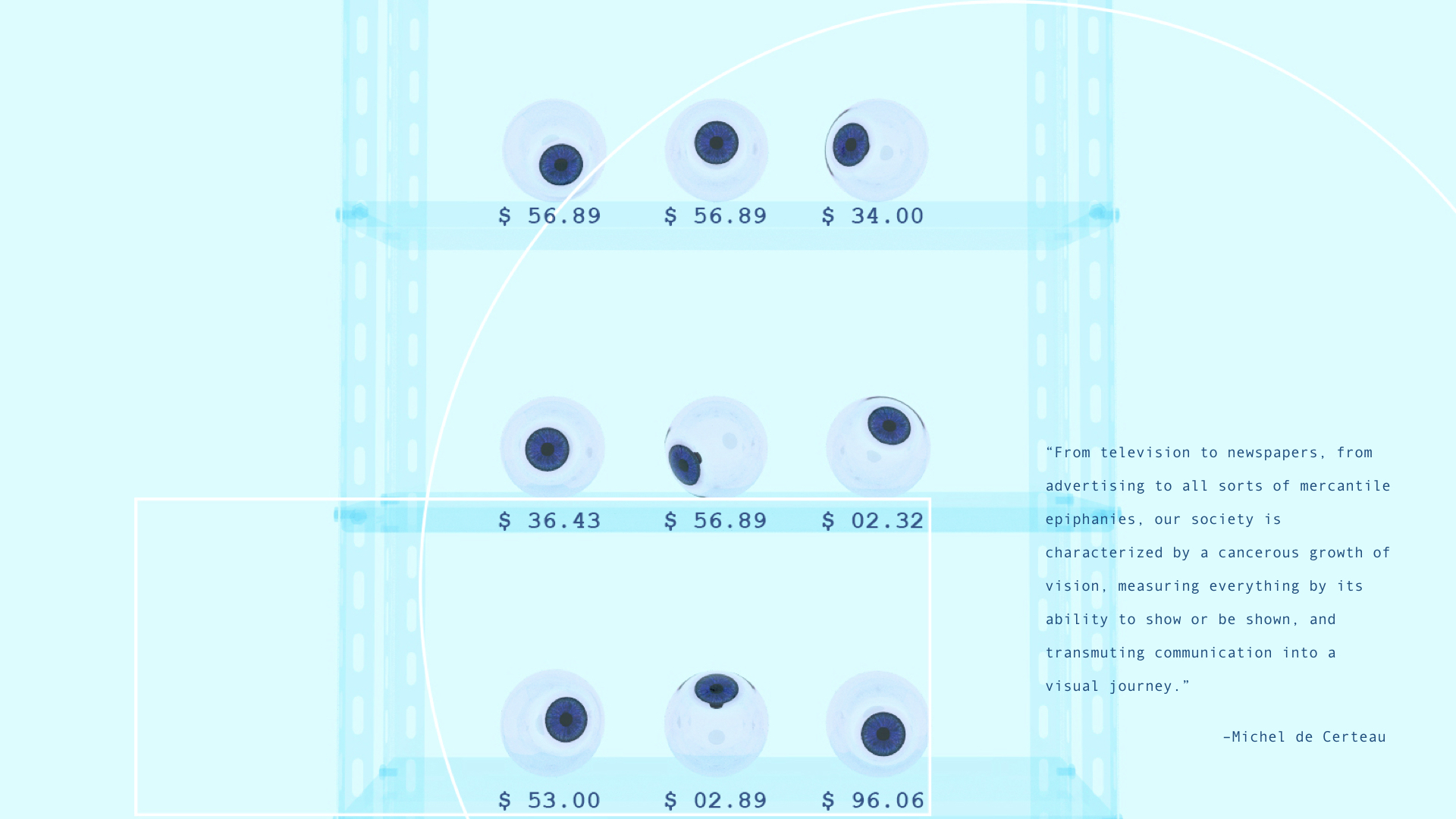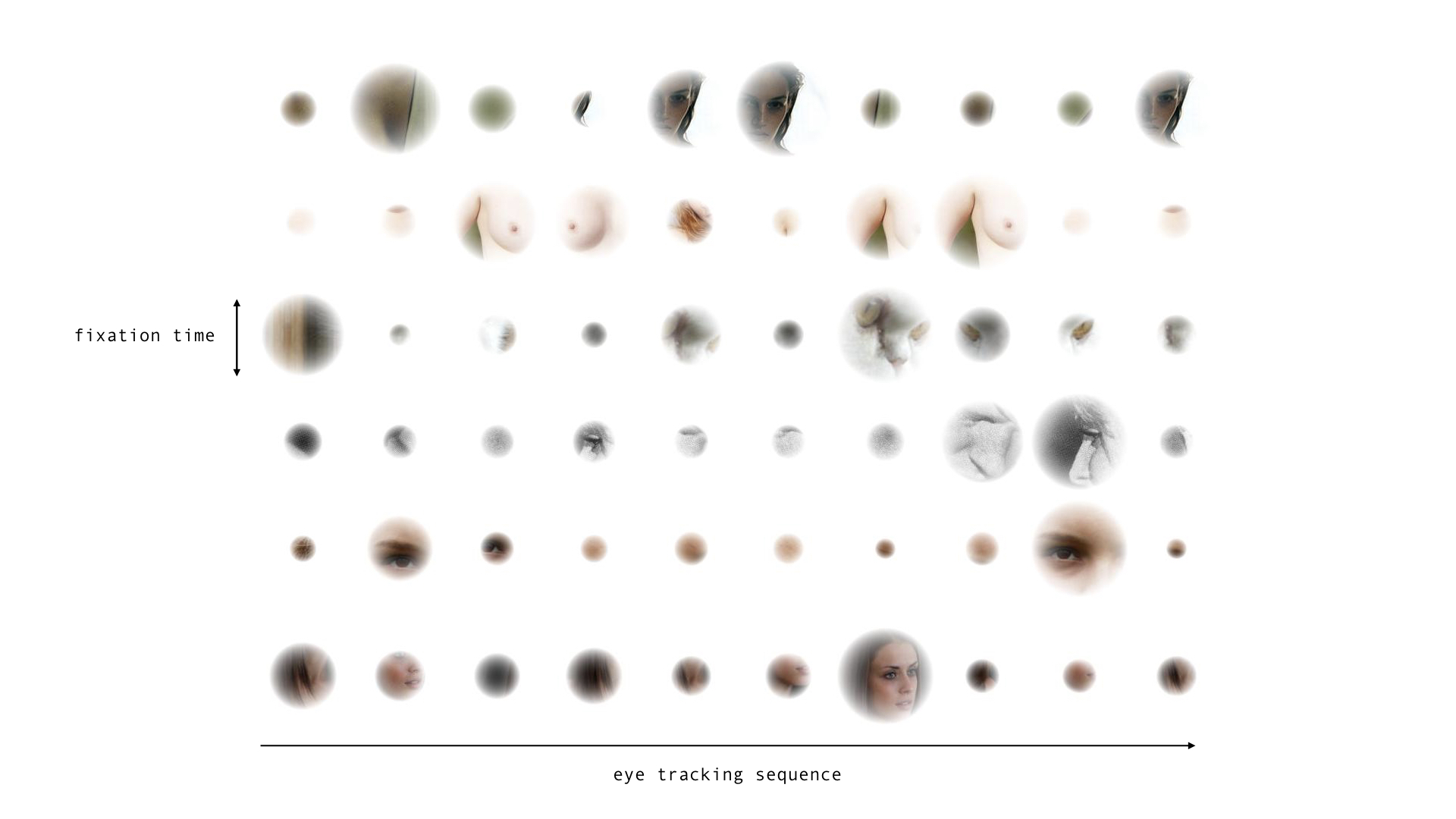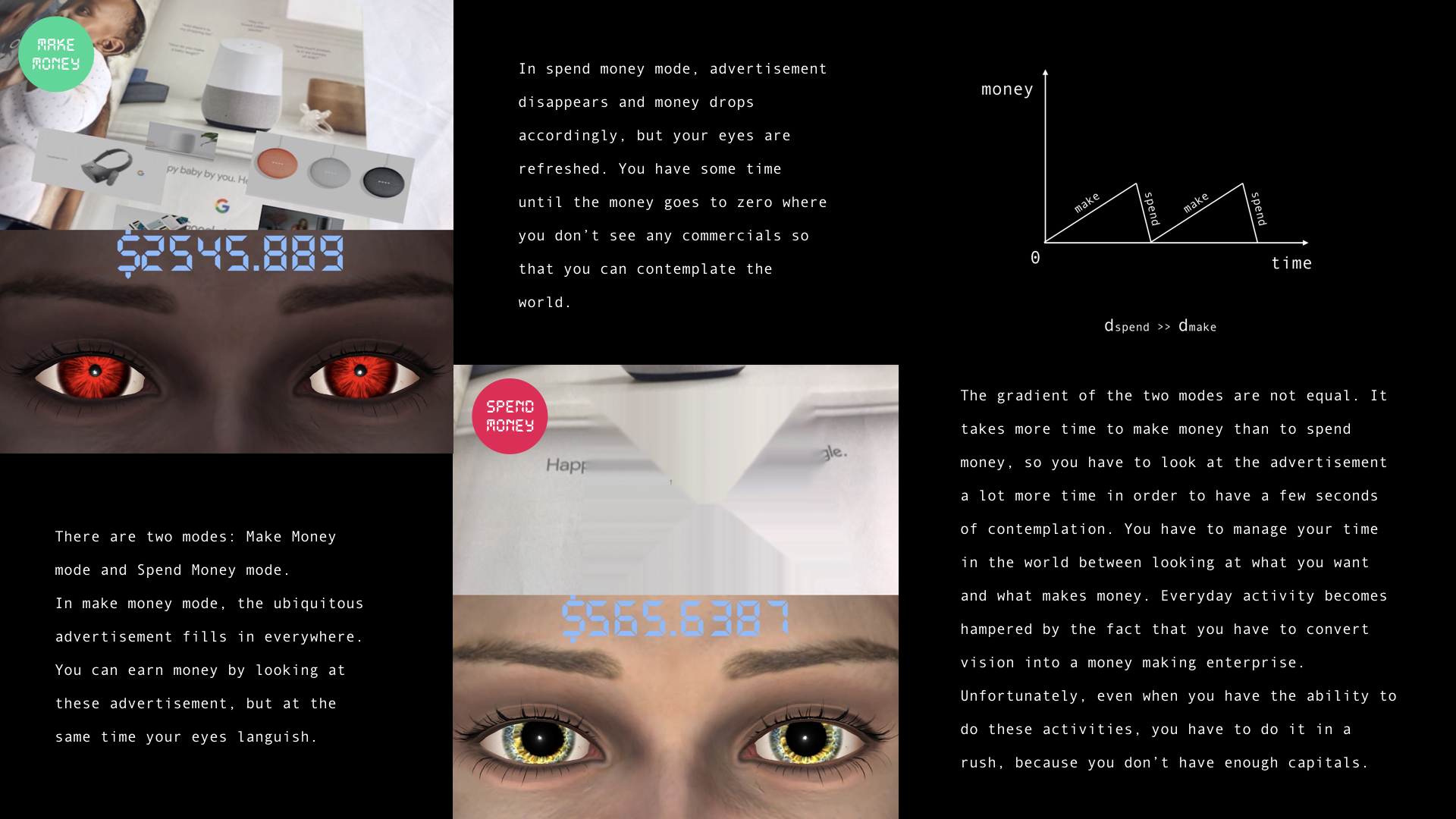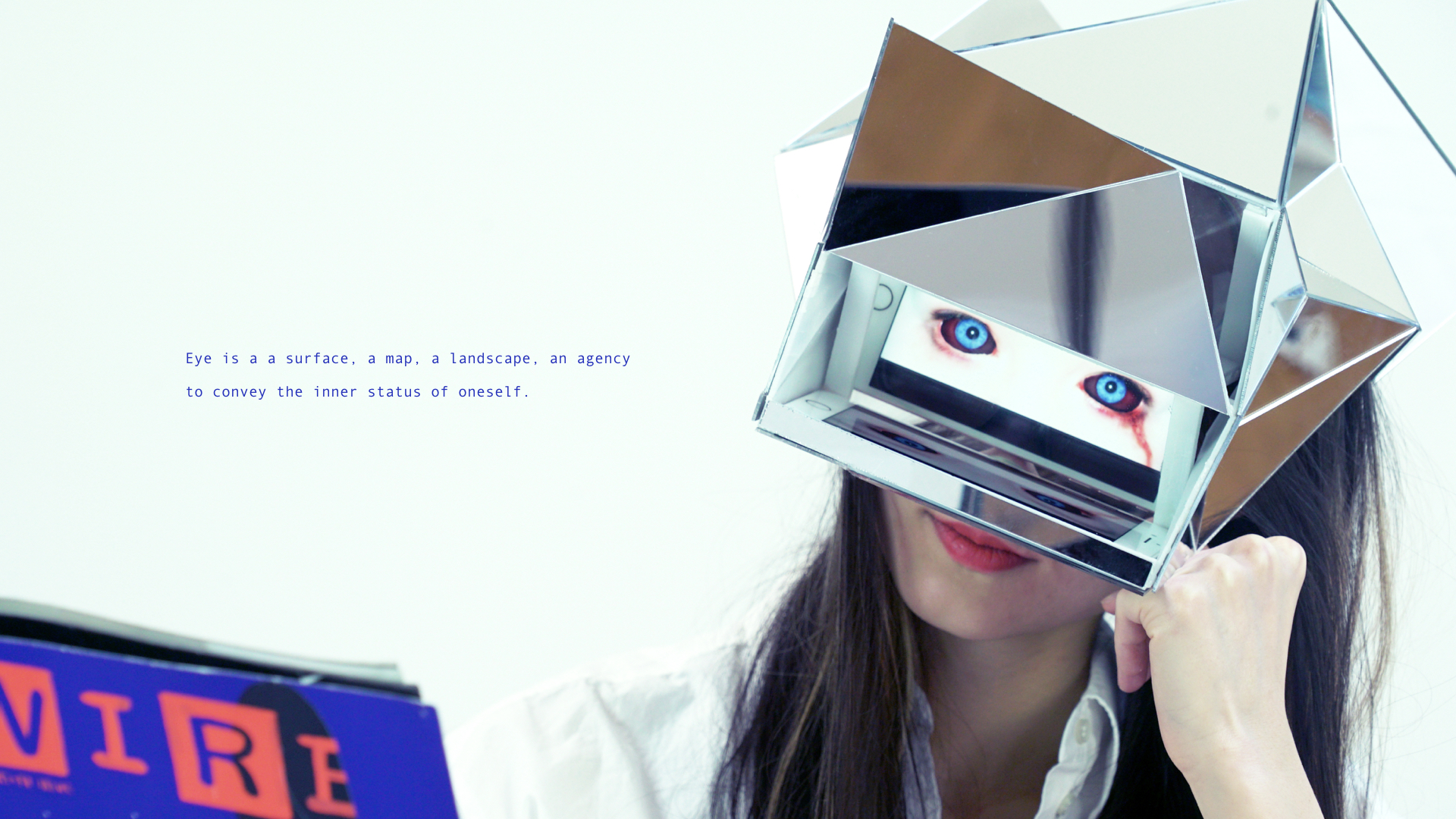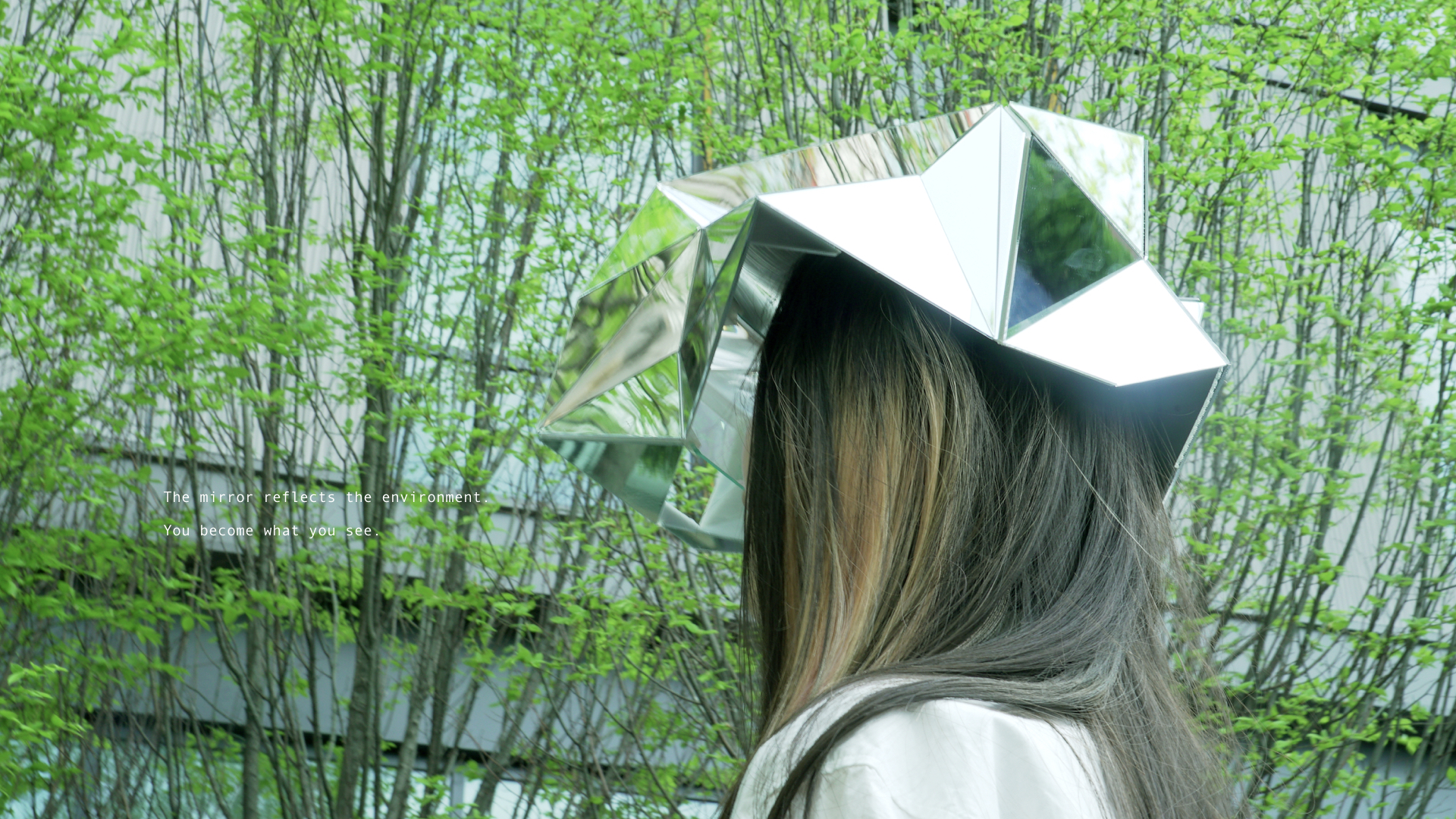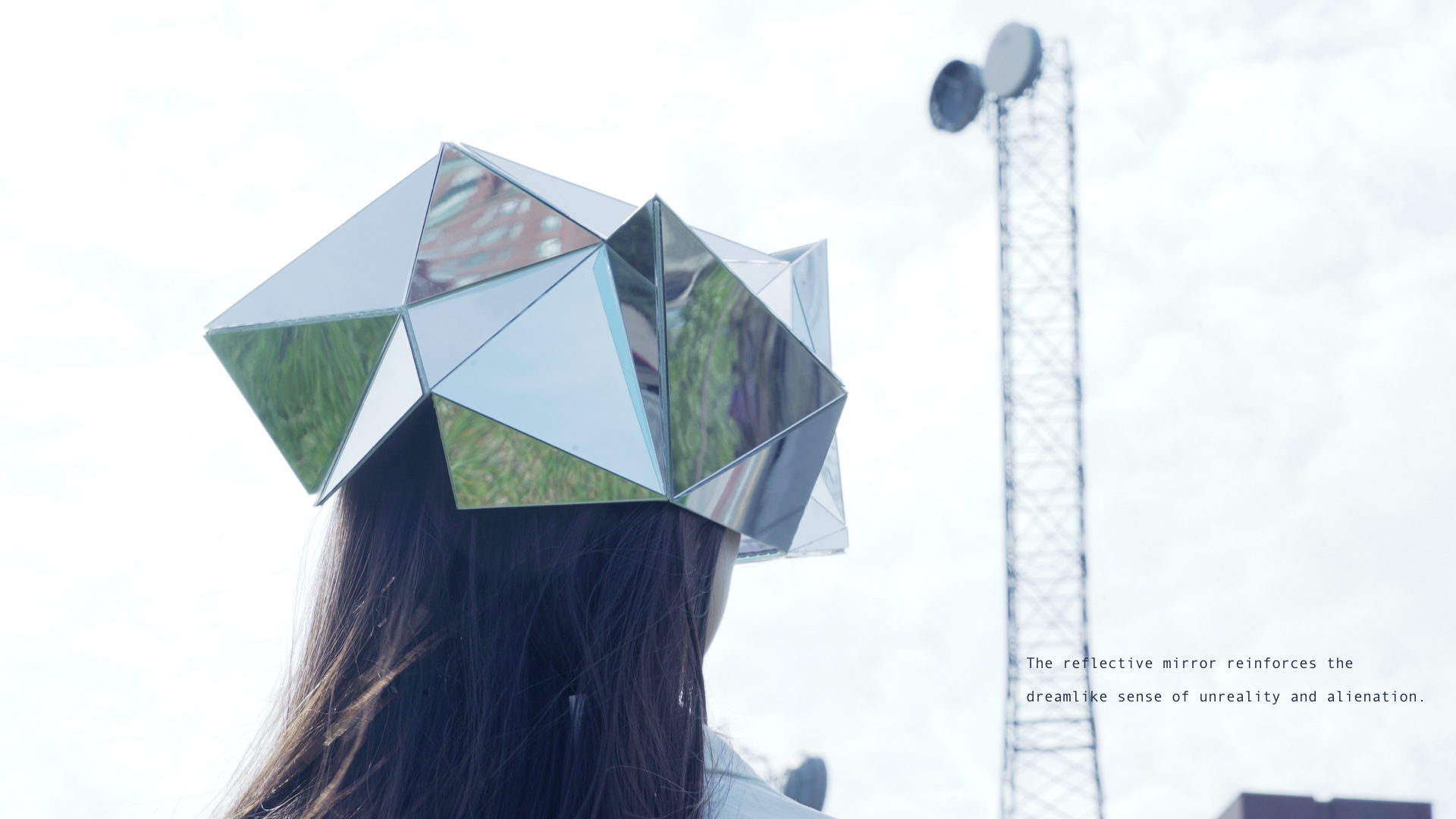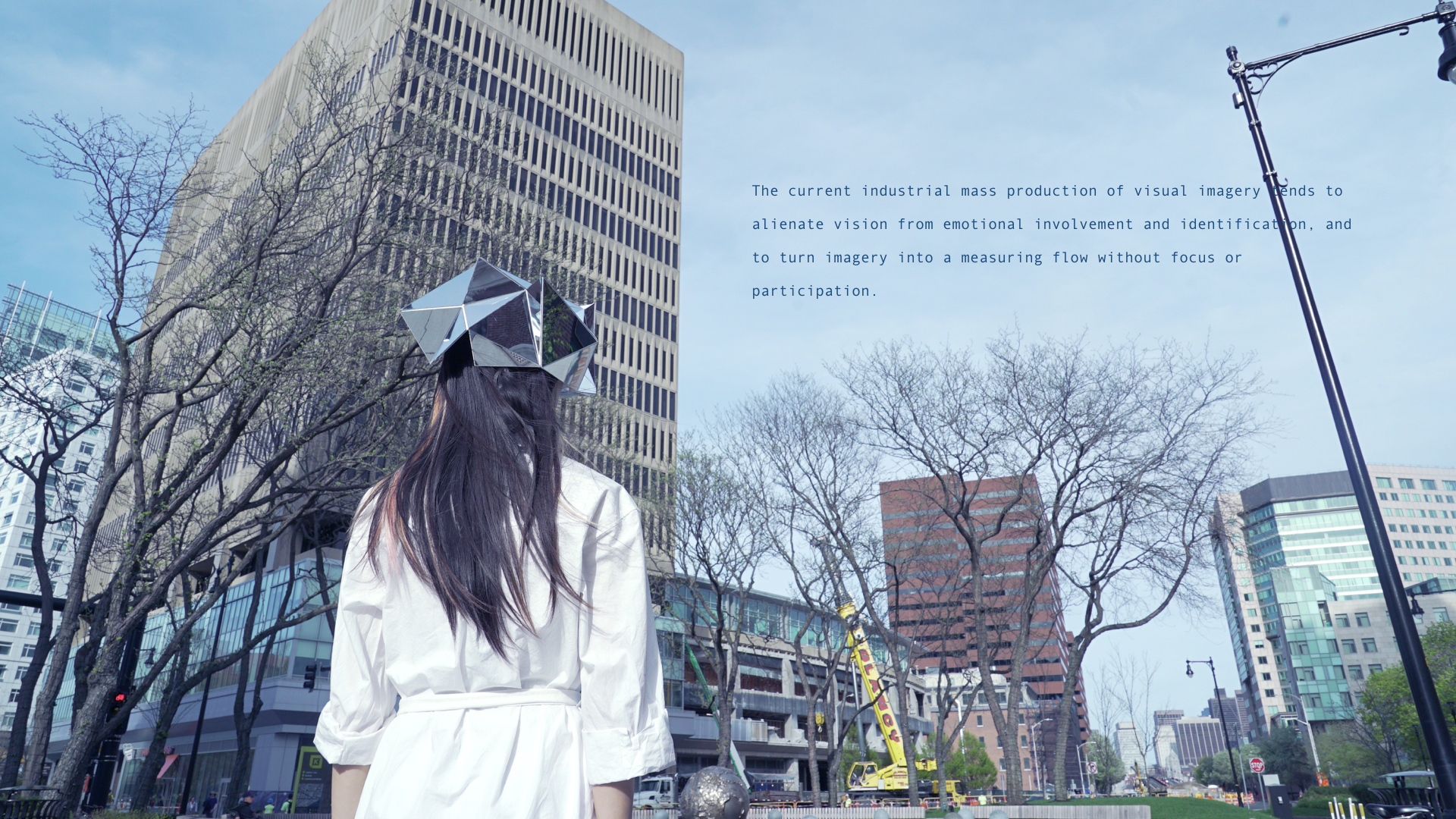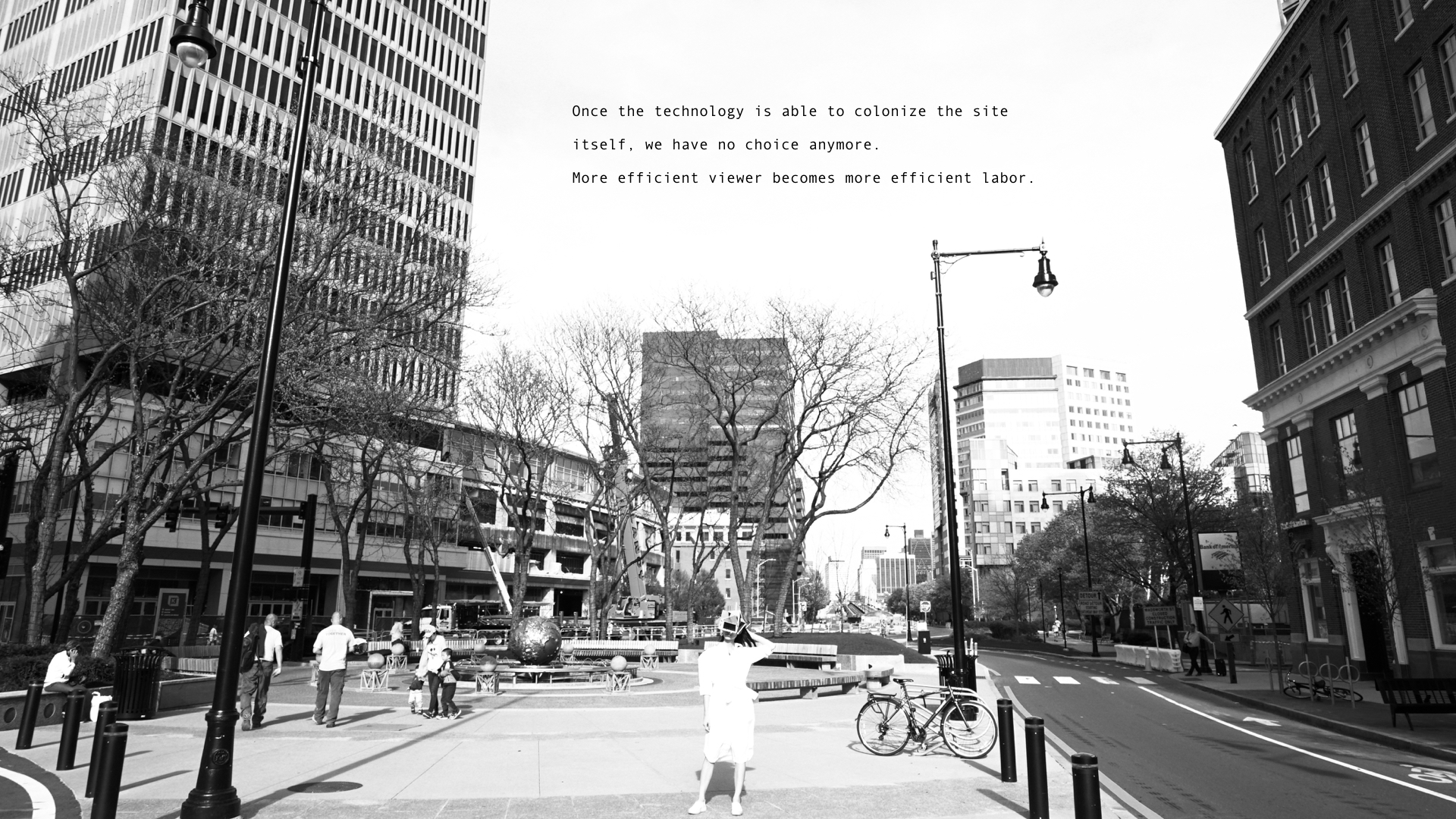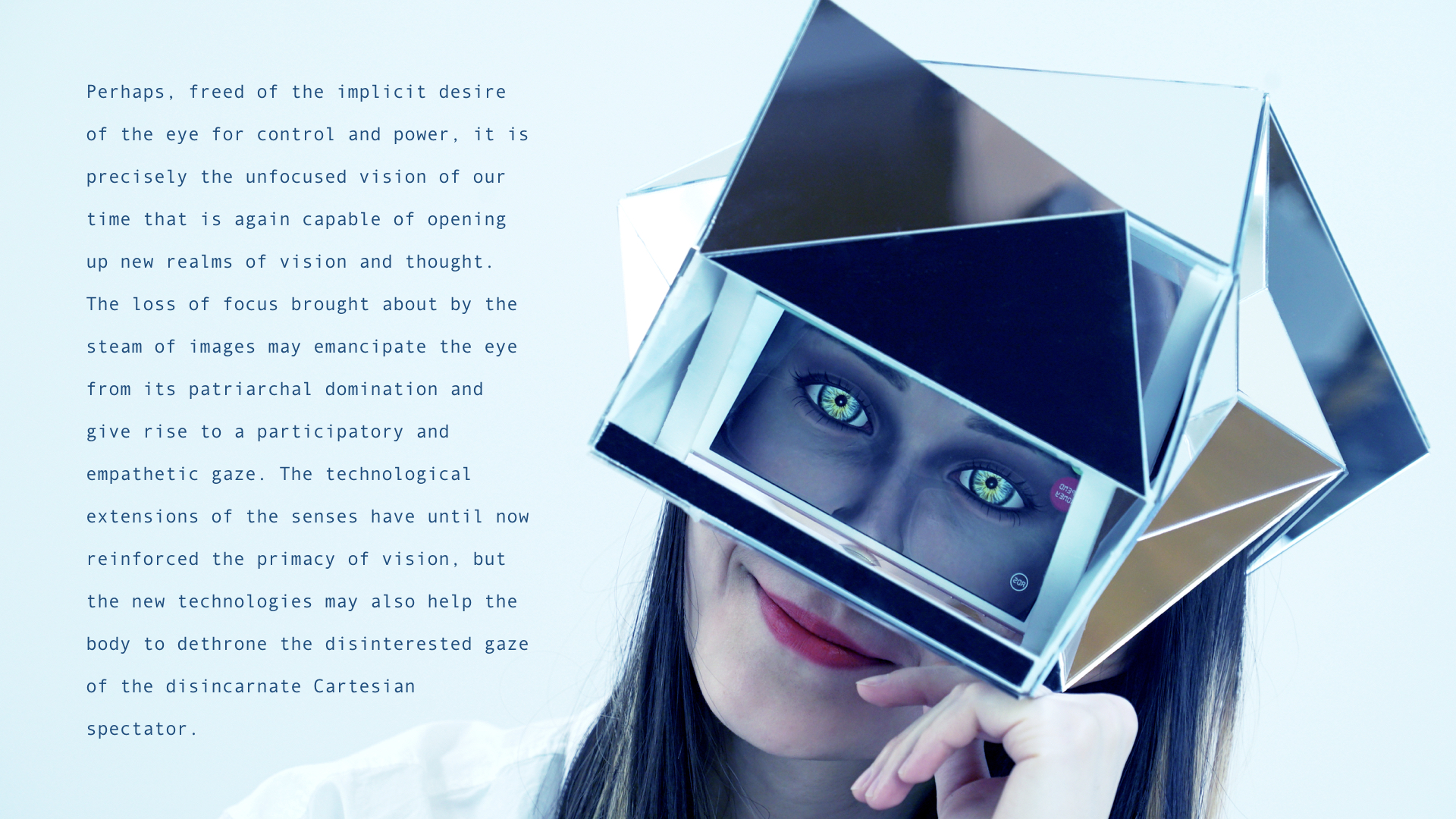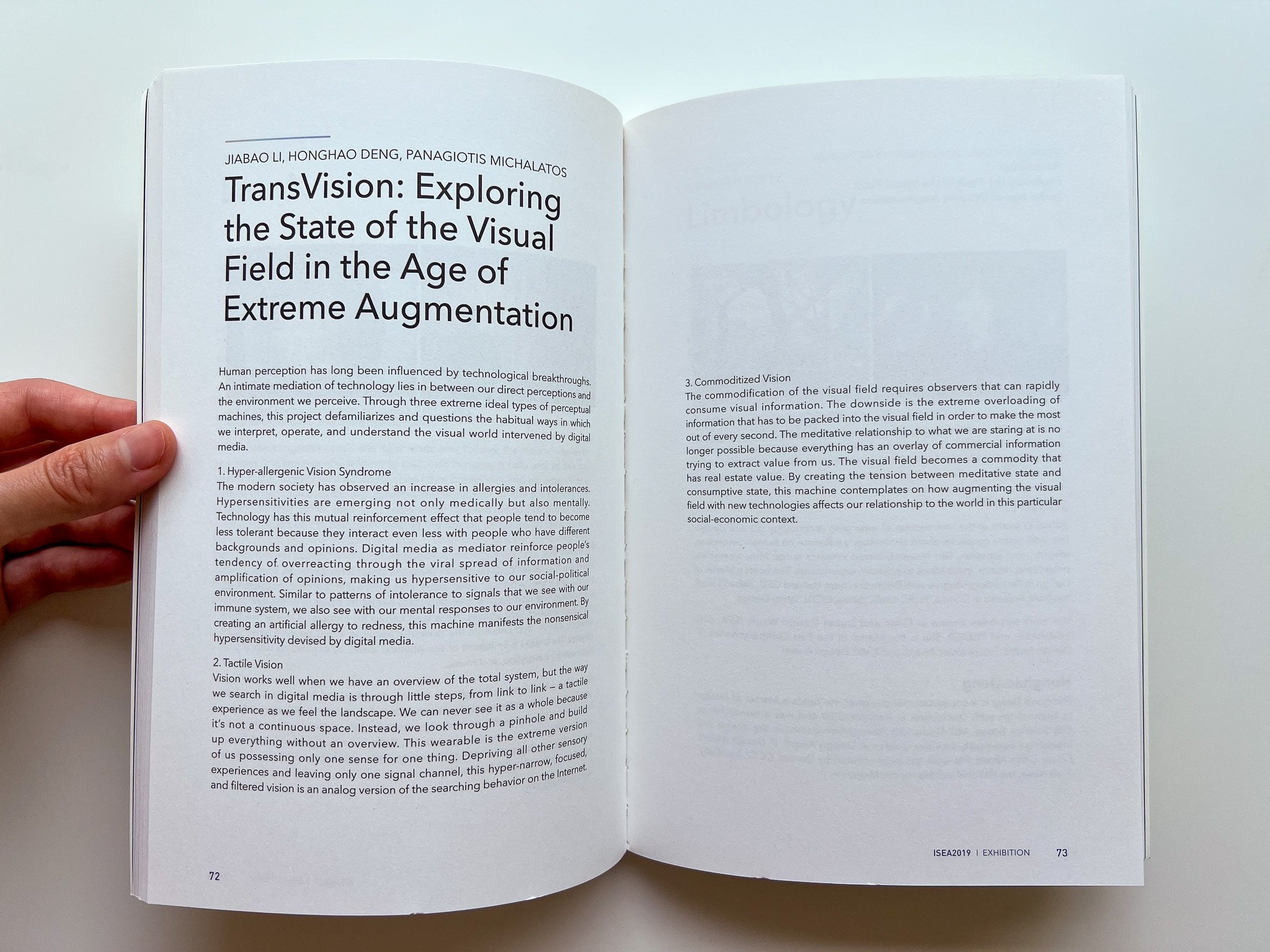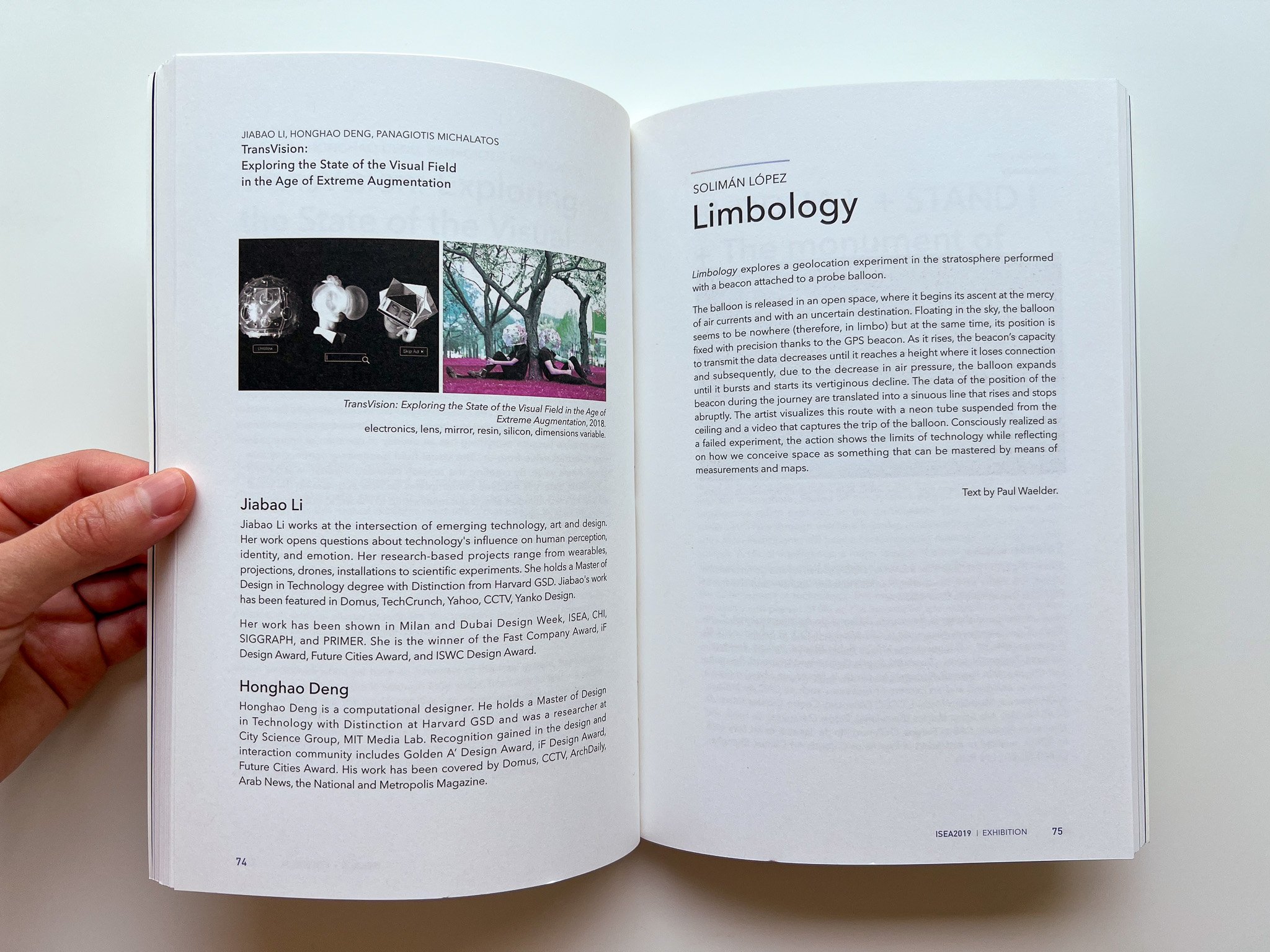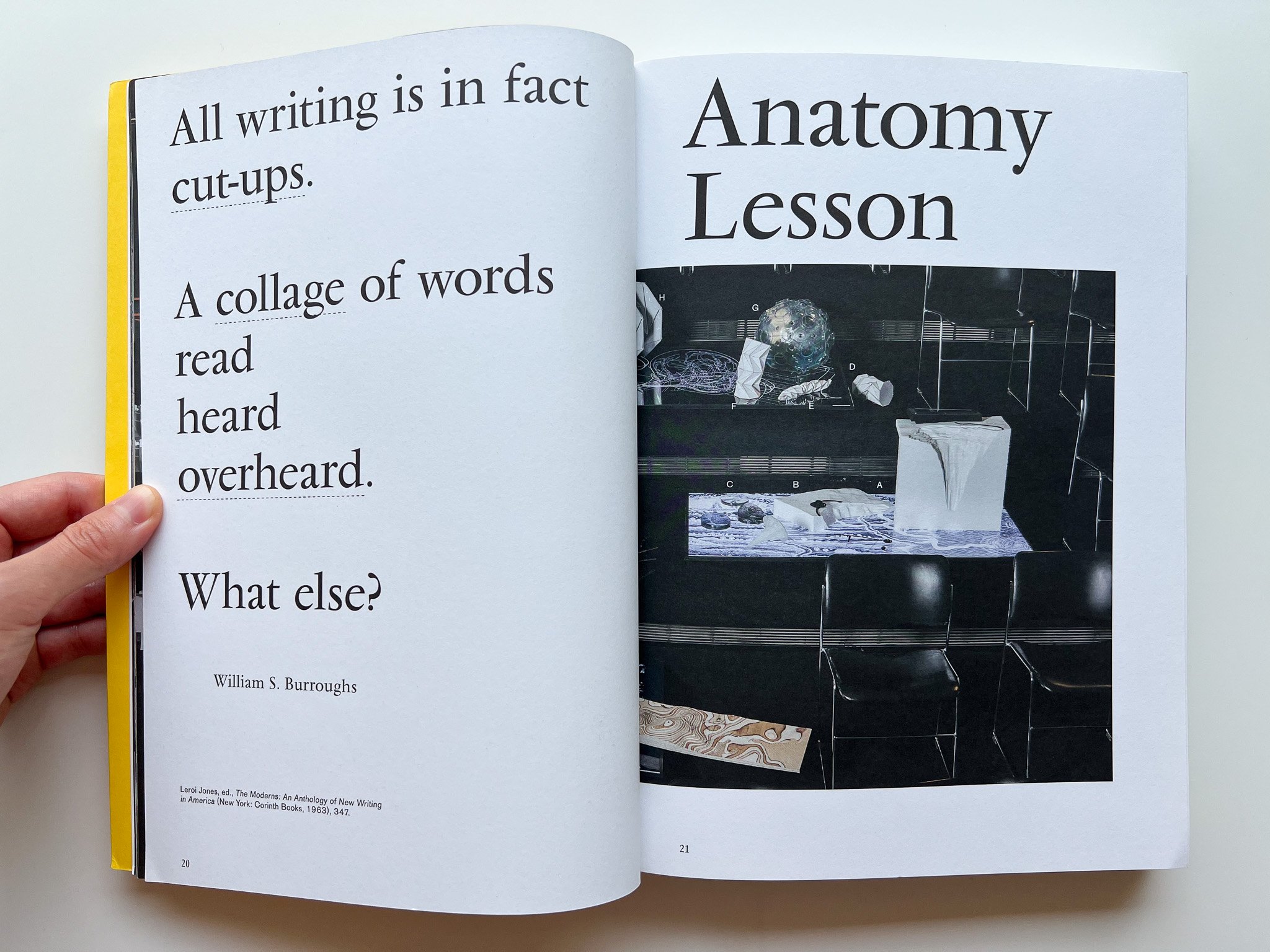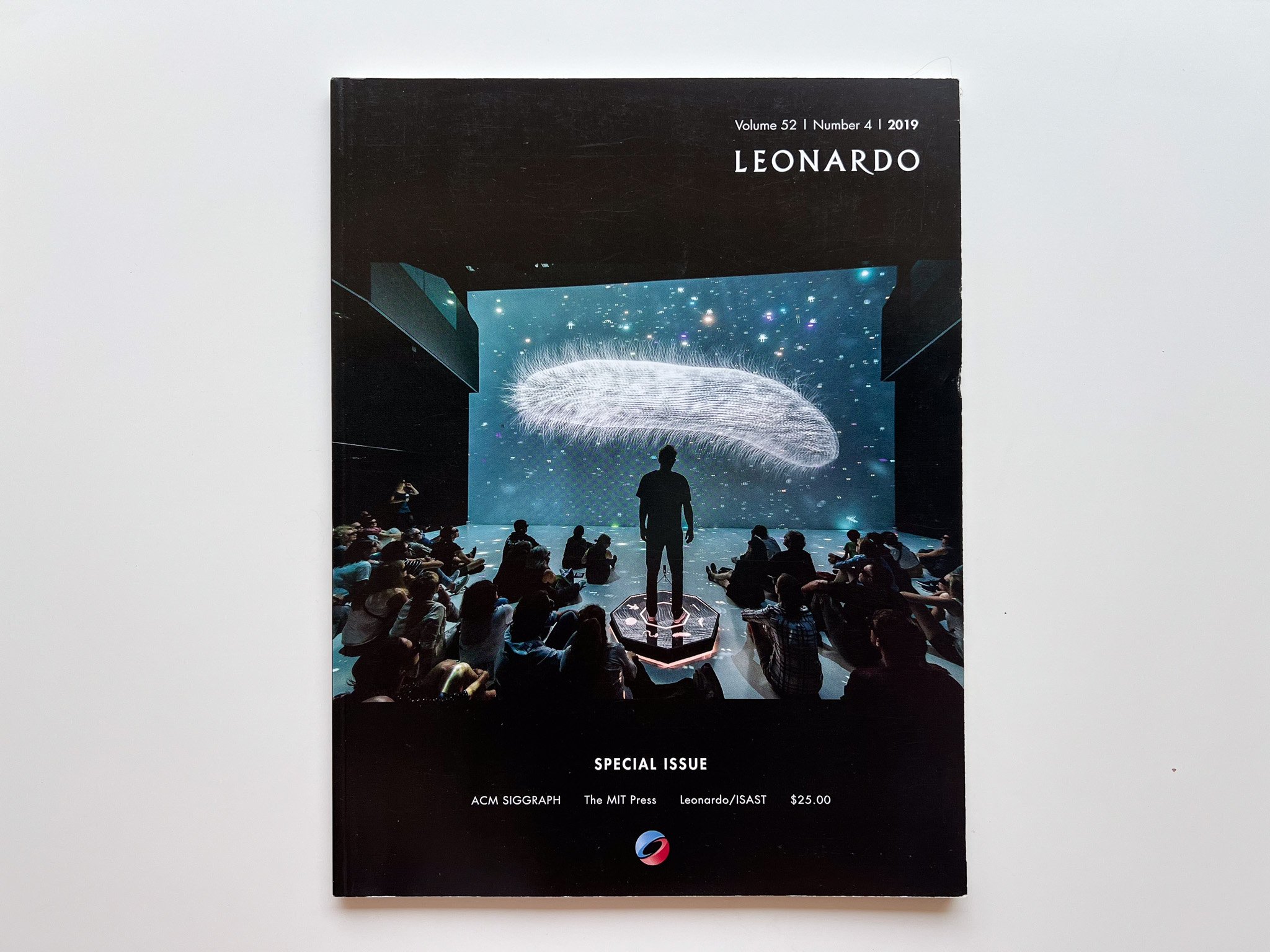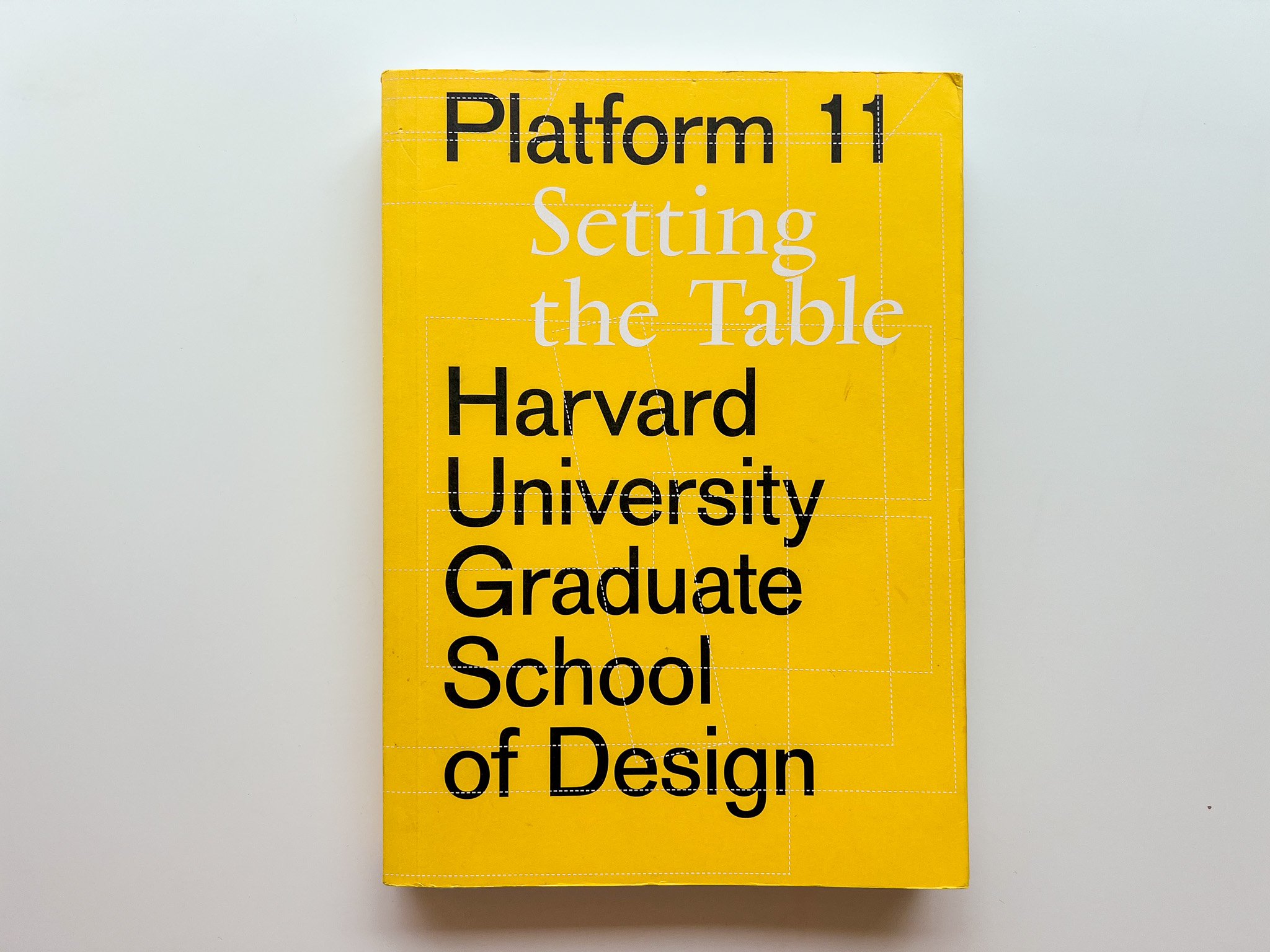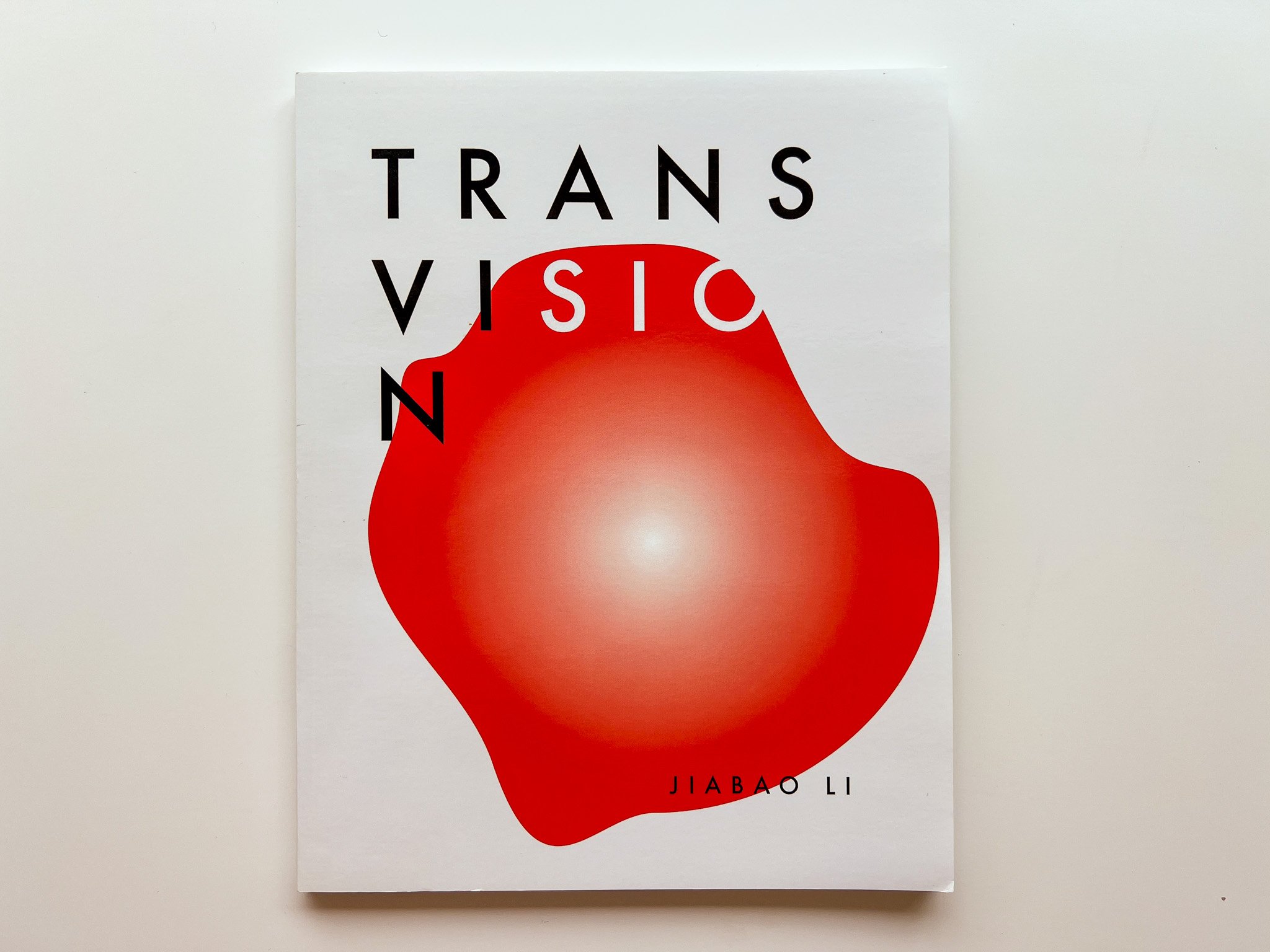TransVision
Exploring the State of the Visual Field in the Age of Extreme Augmentation
Human perception has long been influenced by technological breakthroughs. An intimate mediation of technology lies in between our direct perceptions. Through three extreme ideal types of perceptual machines, this project defamiliarizes and questions the habitual ways in which we interpret, operate, and understand the visual world intervened by digital media.
Hyperallergenic Vision
We have observed an increase in allergies and intolerances in modern society. Hypersensitivities are emerging not only medically but also mentally. Digital media reinforce people’s tendency to overreact through the viral spread of information and amplification of opinions, making us hypersensitive to our sociopolitical environment. By creating an artificial allergy to the color red, this machine manifests the nonsensical hypersensitivity created by digital media. In nocebo mode, red expands, which is similar to social media’s amplification effect; in placebo mode, red shrinks, like our filtered communication landscape where we can unfollow people with different opinions.
Tactile Vision
Obsessively searching online for one thing is like looking through a pinhole where we build up everything without an overview. This machine helps to make the wearer conscious of how we navigate the internet naturally narrows our views of the world. The silicon mask breathes gently when the light is far away, while rapidly when the light gets closer. The wearer can navigate in space and find each other in total darkness with this tactile vision, like a dating App for cave animals. Similar to searching, when you are only looking for one thing, you lose the capacity to see things in context to make more informed decisions.
Commoditized Vision
Our visual field is packed with so much information that our perception has become a commodity with real estate value. By creating tension between the meditative state and the consumptive state, this machine contemplates how our perception has become part of the value chain in this particular socioeconomic context. You can earn money by looking at advertisements, and spend money to see an ads free world.
超级视力:科技如何影响我们对现实的感知
人类感知长久以来受到科技突破的影响。科技在我们的直接感知之间有着亲密的中介作用。通过三种极端的感知机器,本项目质疑和陌生化我们对数字媒体介入下的视觉世界的习以为常的解读。
超敏感视觉
我们观察到现代社会中过敏和不耐受现象的增加。过敏反应不仅在医学上出现,也在心理上出现。数字媒体加强了人们对信息的病毒式传播和意见的放大,使我们对社会环境过度敏感。这个头盔人为的创造了对红色的过敏,体现了数字媒体造成的无意义的过度敏感。在反安慰剂模式下,红色扩大,如同社交媒体的放大效应,算法不断地灌输给你与你意见一致的观点;在安慰剂模式下,红色缩小,如我们被自我过滤的信息流,我们可以取消关注持与我们意见不同的人来将他们的观点置之度外。这种过敏使人类社会两极分化。
触觉视觉
在网上急切地搜索某一事物,就像透过针孔看世界。我们在没有全局观的情况下构建一切。这件感知机器帮助佩戴者意识到我们在互联网上搜索信息的方式是如何缩小了我们对世界的视野。当光在远处的时候,面罩轻轻呼吸;当光在近处的时候,面罩快速呼吸。佩戴者可以在完全黑暗中使用这种触觉视觉在空间中穿梭,寻找彼此,就像洞穴动物的约会App。如同在互联网上的搜索,当你只搜寻一件事时,你会失去在更大背景下看事物、从而做出更明智的决策的能力。
商品化视觉
我们的视野充斥繁多的信息,以至于我们的感知已成为具有房地产价值的商品。通过在冥想状态和消费状态之间创造紧张感,这台感知机器思考了我们的感知如何在特定的社会经济背景下成为价值链的一部分。你可以通过看广告来赚钱,然后把钱花在看一个无广告的世界。
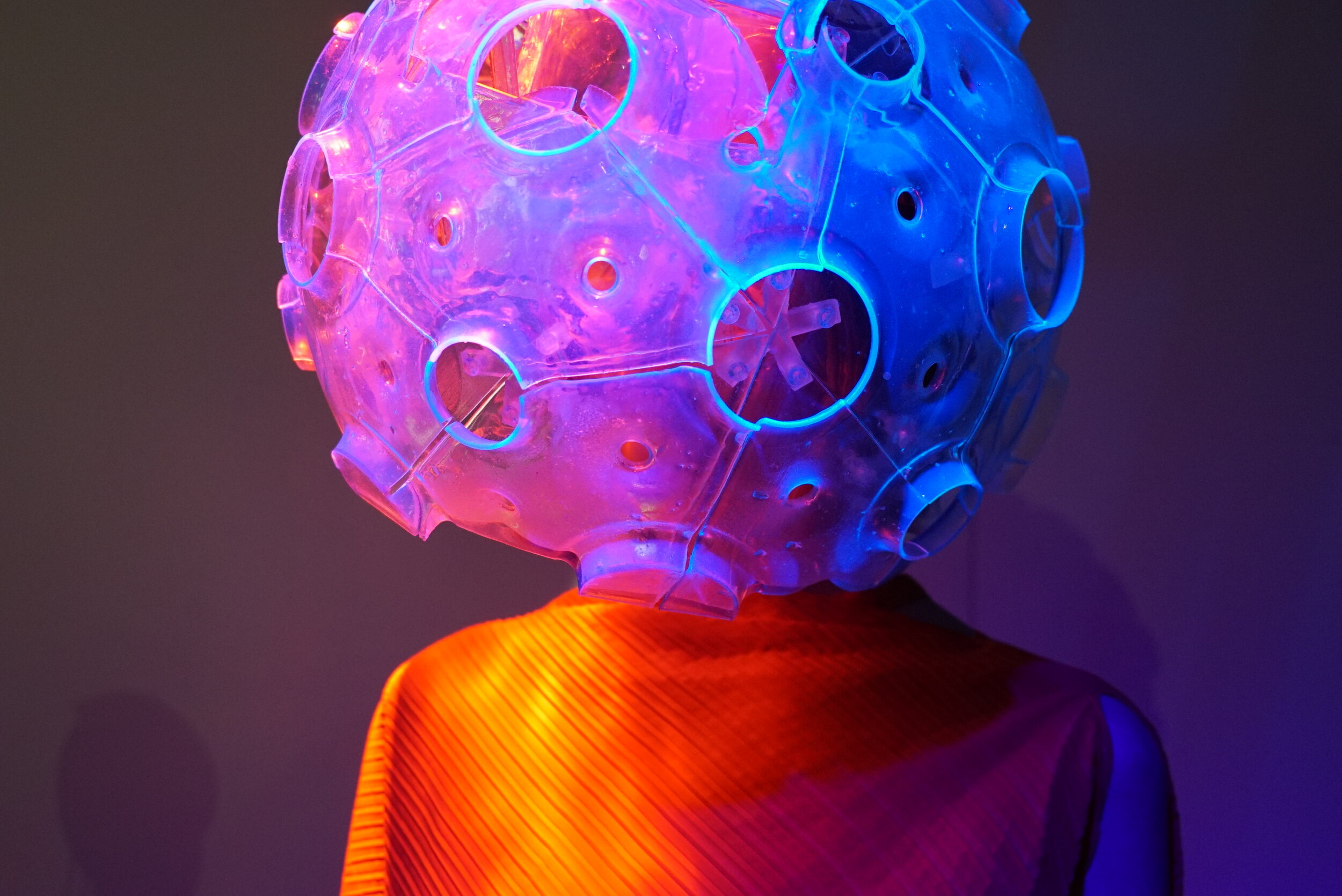
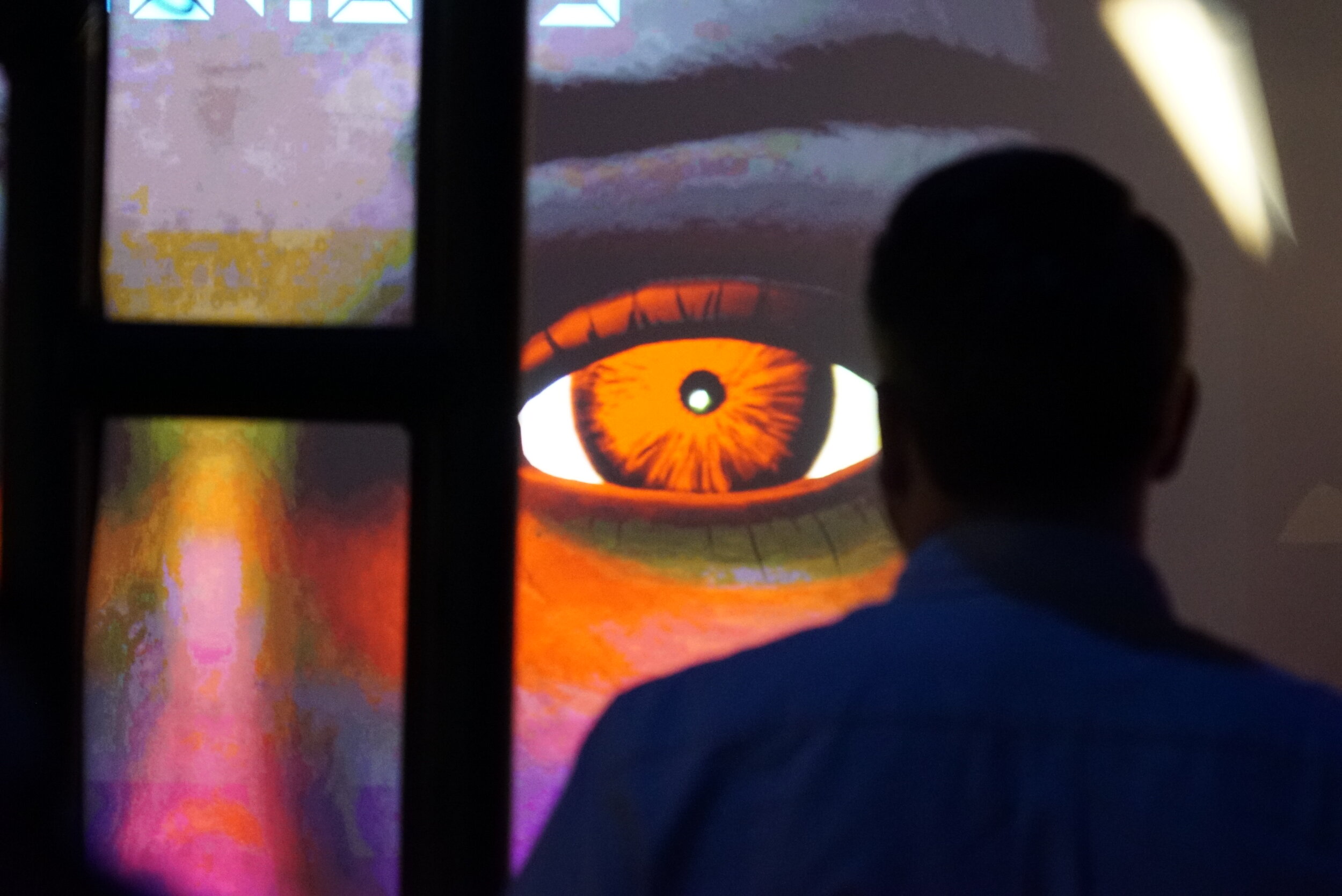
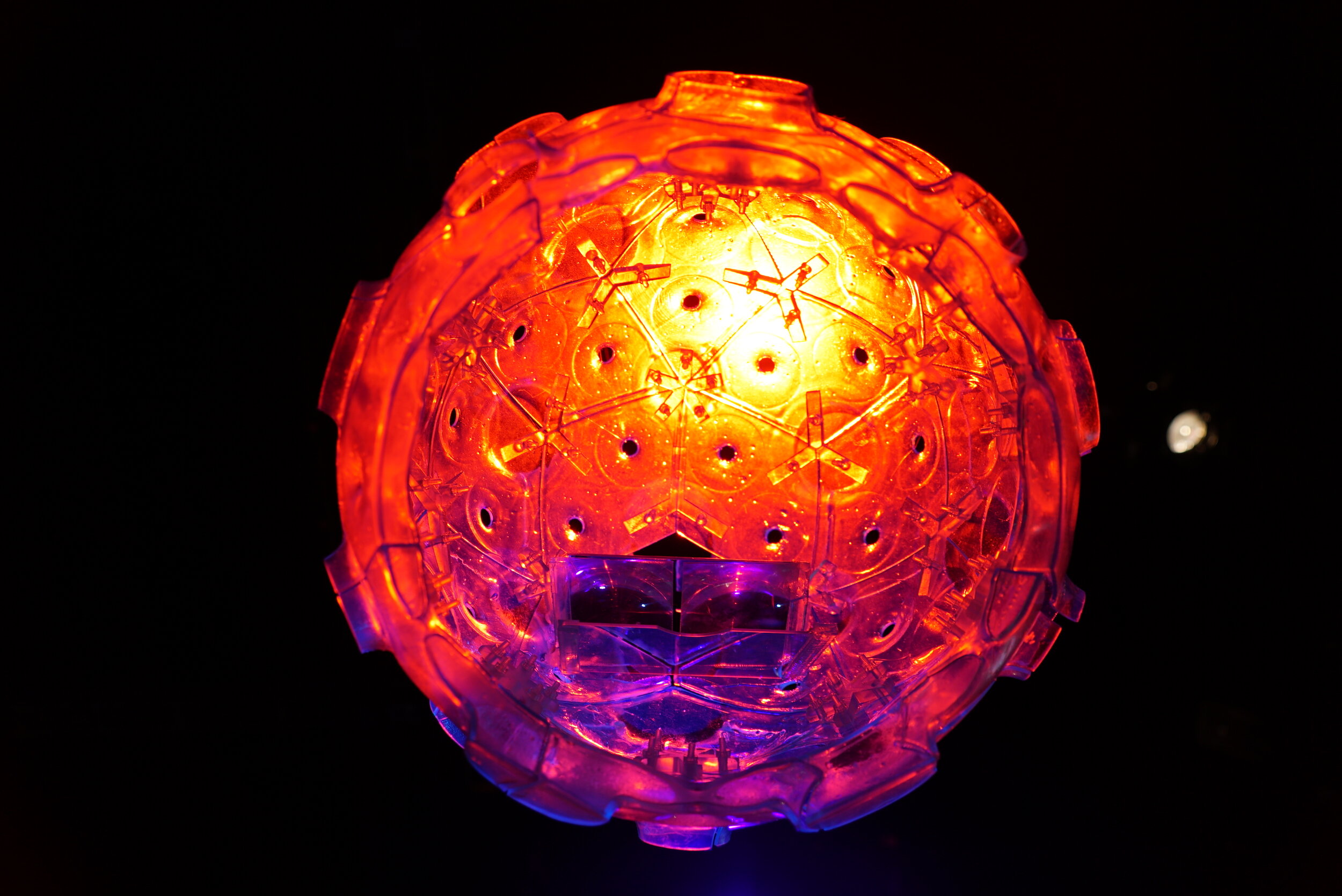
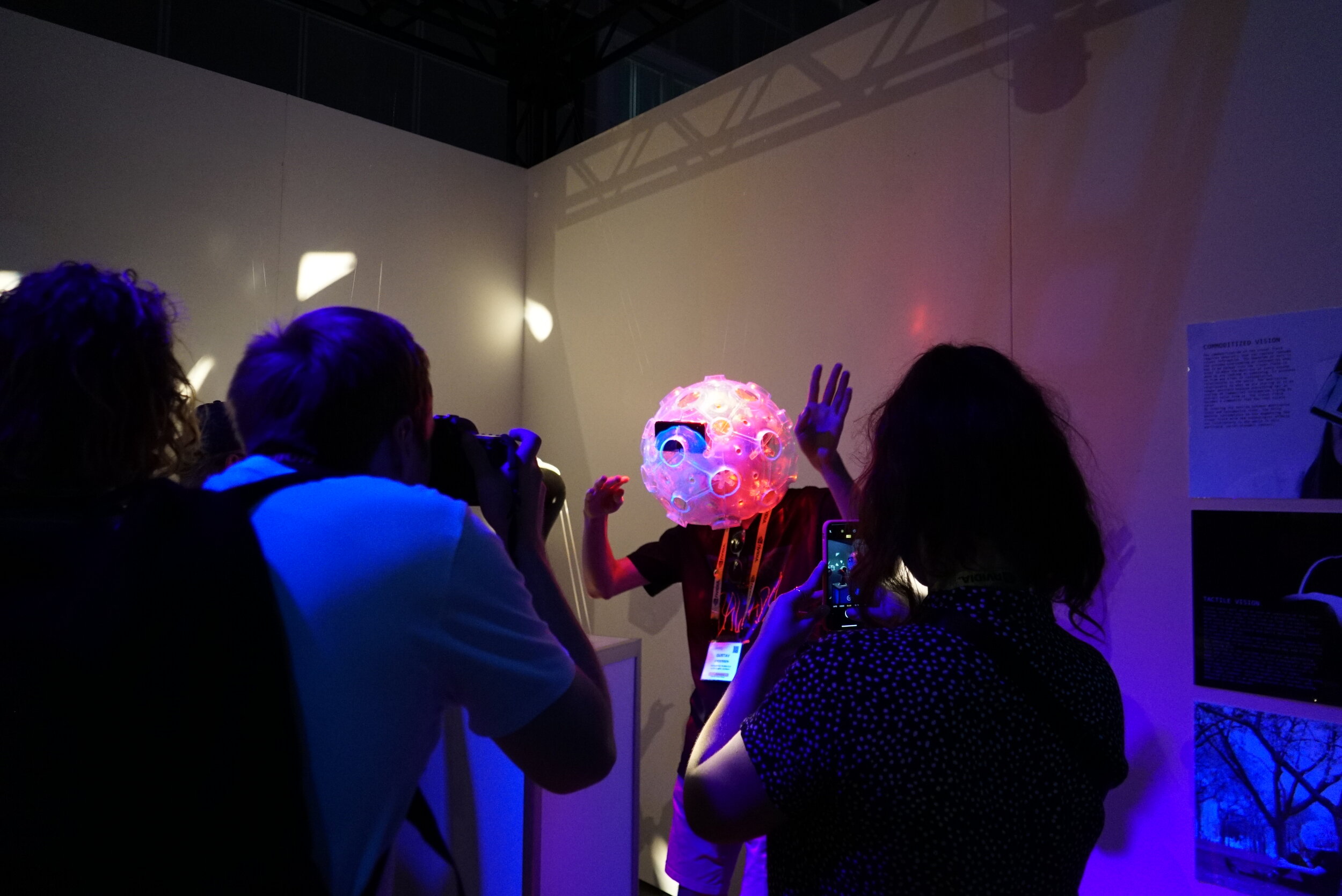
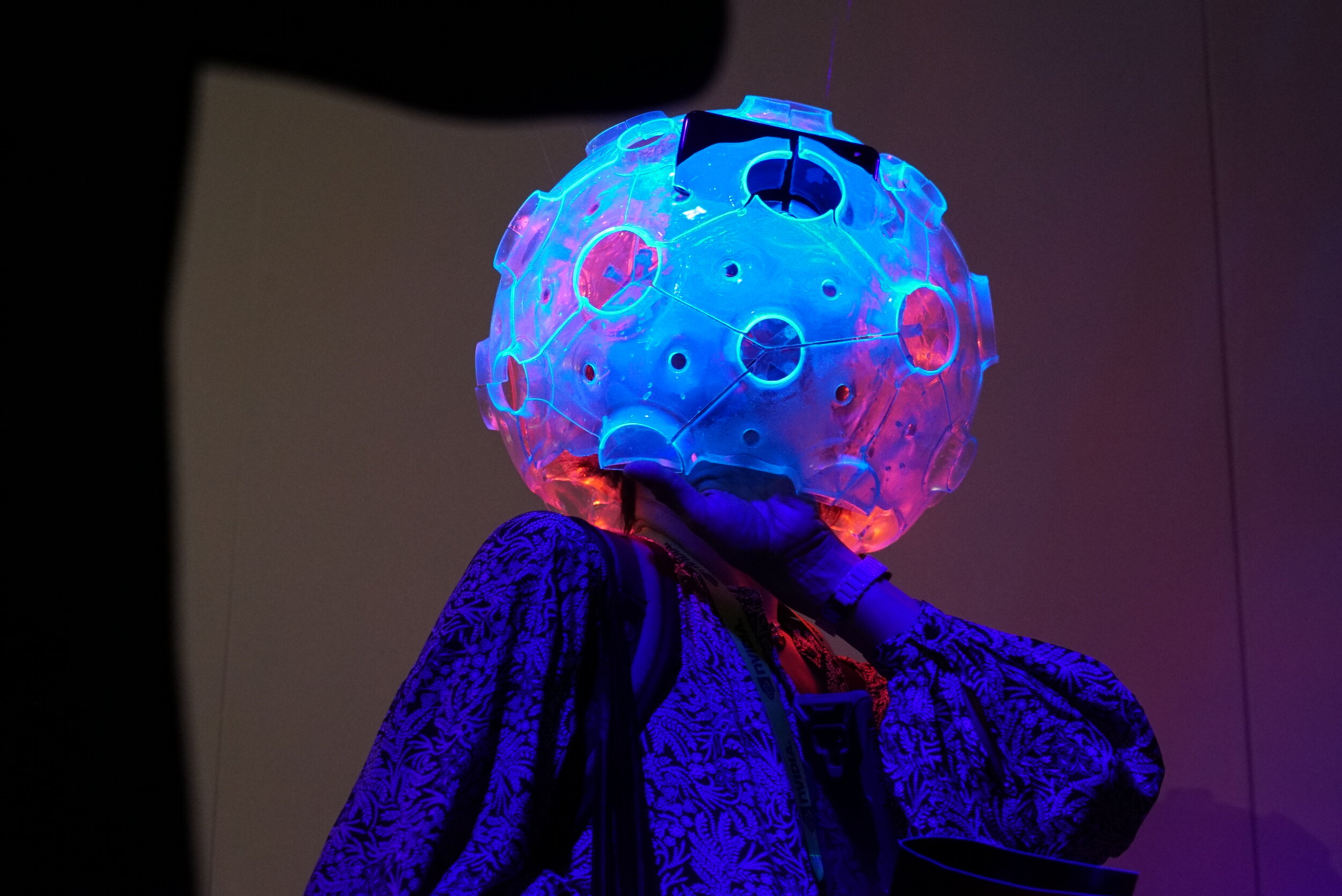
Talks
TED Talk, “Art That Reveals How Technology Frames Reality”
TEDxBeaconStreet, “How Technology Mediates the Way We Perceive Reality”
Exhibitions
Shanghai Ming Contemporary Art Museum, “充电指南”, 2025
DESIGNART TOKYO, Japan, 2025
Progenitorial Hysteresis 祖细迟滞. 12 Dec 2023 - 13 Apr 2024, Duande Art Museum 巽美术馆, China
SIGGRAPH Art Gallery, Los Angeles, 2019
“Lux Aeterna”, International Symposium on Electronic Art, Asia Culture Center, Gwangju, South Korea, 2019
“Space”, Art+Tech Festival, Codame, San Francisco, 2019
CHI, Glasgow, 2019
“Futures For All”, Primer, New York, 2019
Awards
STARTS Prize, Honorary Mention
International Symposium on Wearable Computers Design Award
Harvard Best Thesis Prize
Publications
TransVision, book
“How Does Media Architecture Distribute Suspicion and Trust?” Provocations on Media Architecture, ed. Ian Callender and Annie Dell’Aria. Eindhoven: Set Margins’, 2023.
Jiabao Li, Honghao Deng, and Panagiotis Michalatos. 2019. “TransVision: Exploring the States of the Visual Field in the Age of Extreme Augmentation.” Leonardo 52 (4): 424–425. https://www.jstor.org/stable/26808824
Jiabao Li, Honghao Deng, and Panagiotis Michalatos. 2019. “TransVision: Exploring the State of the Visual Field in the Age of Extreme Augmentation.” In Proceedings of the 25th International Symposium on Electronic Art (ISEA 2019), 105–110. Gwangju, South Korea: ISEA International.
Jiabao Li, Honghao Deng, and Panagiotis Michalatos. 2018. “TransVision: Exploring the States of the Visual Field in the Age of Extreme Augmentation.” DiVA 48: 1–4. https://art-science.org/diva/pdf/diva48-hq.pdf
Jiabao Li, Honghao Deng, and Panagiotis Michalatos. 2018. “TransVision: Exploring the State of the Visual Field in the Age of Extreme Augmentation.” Proceedings of the 2018 ACM International Symposium on Wearable Computers (ISWC), 186–193. https://doi.org/10.1145/3267242.3267293.
“TransVision: Exploring the States of the Visual Field in the Age of Extreme Augmentation.” Setting the Table, Platform 11, ed. Esther Mira Bang, Lane Raffaldini Rubin, Enrique Aureng Silva, Harvard University Graduate School of Design and Actar, 2018
Press
Marie Boran, The wearable tech project allowing users to literally see their biases, Irish Times, Mar 11, 2020
6 Innovators at TEDWomen on Their Strategy for Shaking up the World, Business Insider, Jan 15 2020
Fatima Arif, Revealing how technology frames our reality through art, Mashable, 2020
Pattern Makers: Notes from Session 2 of TEDWomen 2019, TED Blog, Dec 5, 2019
青年艺术家推荐|李佳宝:后人类时代里的科技与智能, 绝对艺术, Feb 24, 2024
XÙN访谈|对话李佳宝:祖细迟滞, 巽美术馆, Jun 4, 2024
Book: Provocations on Media Architecture





